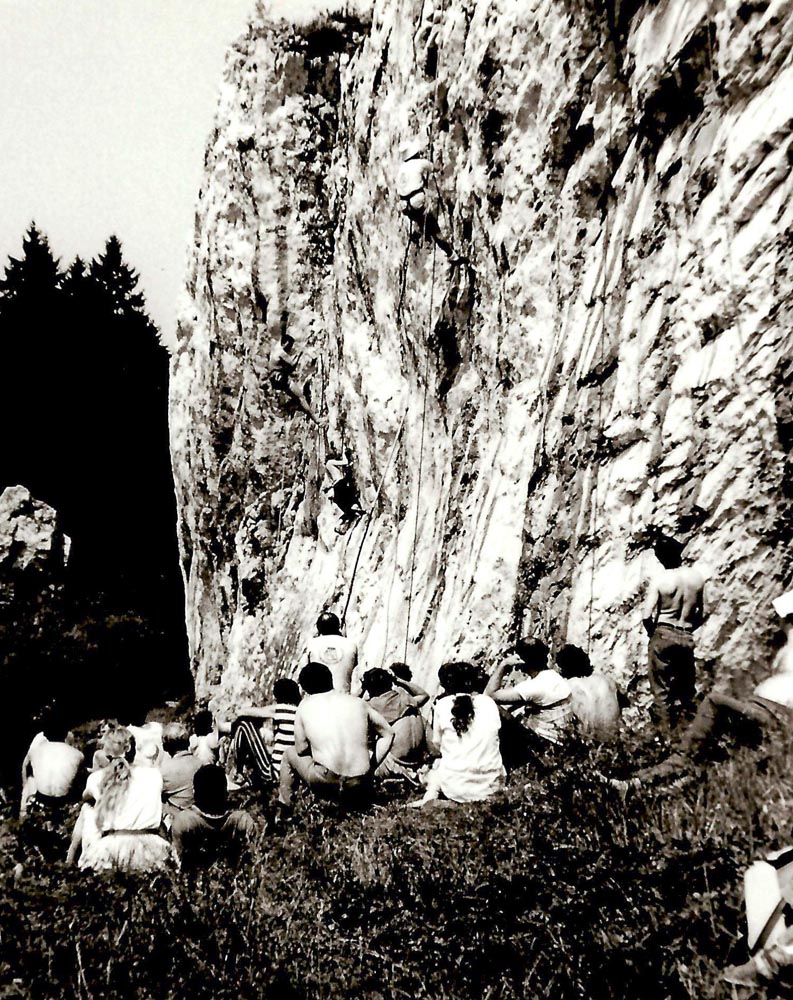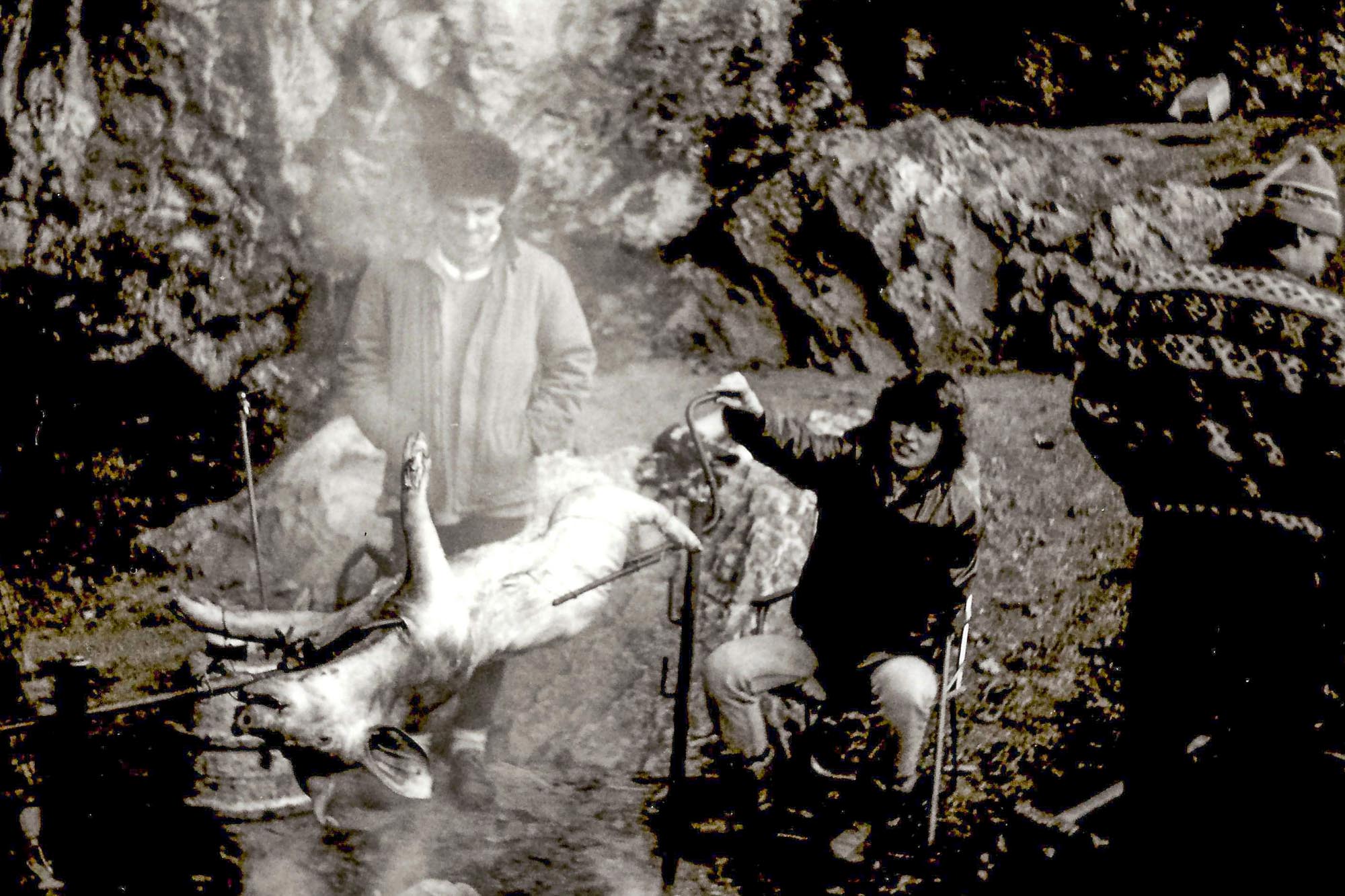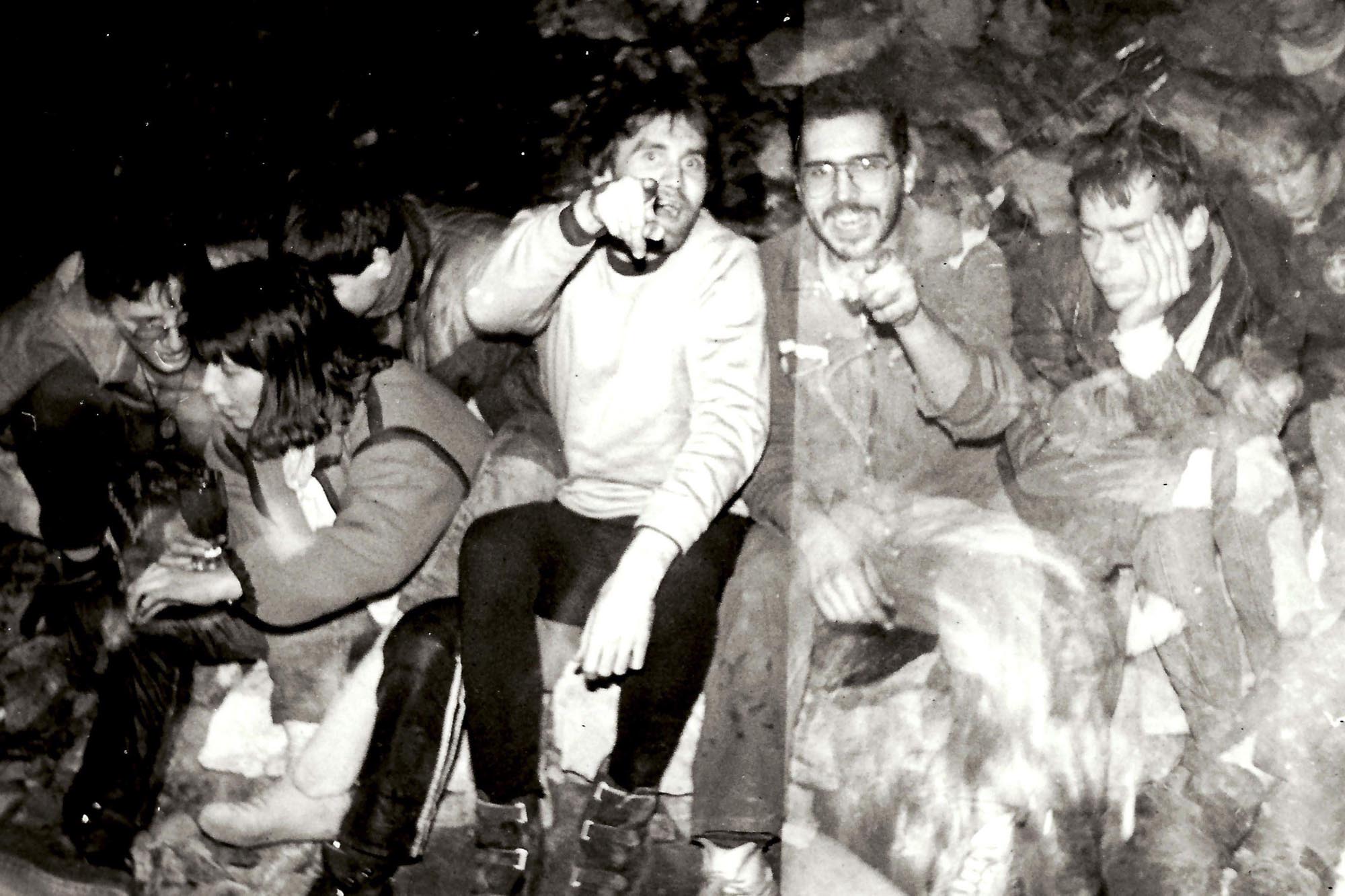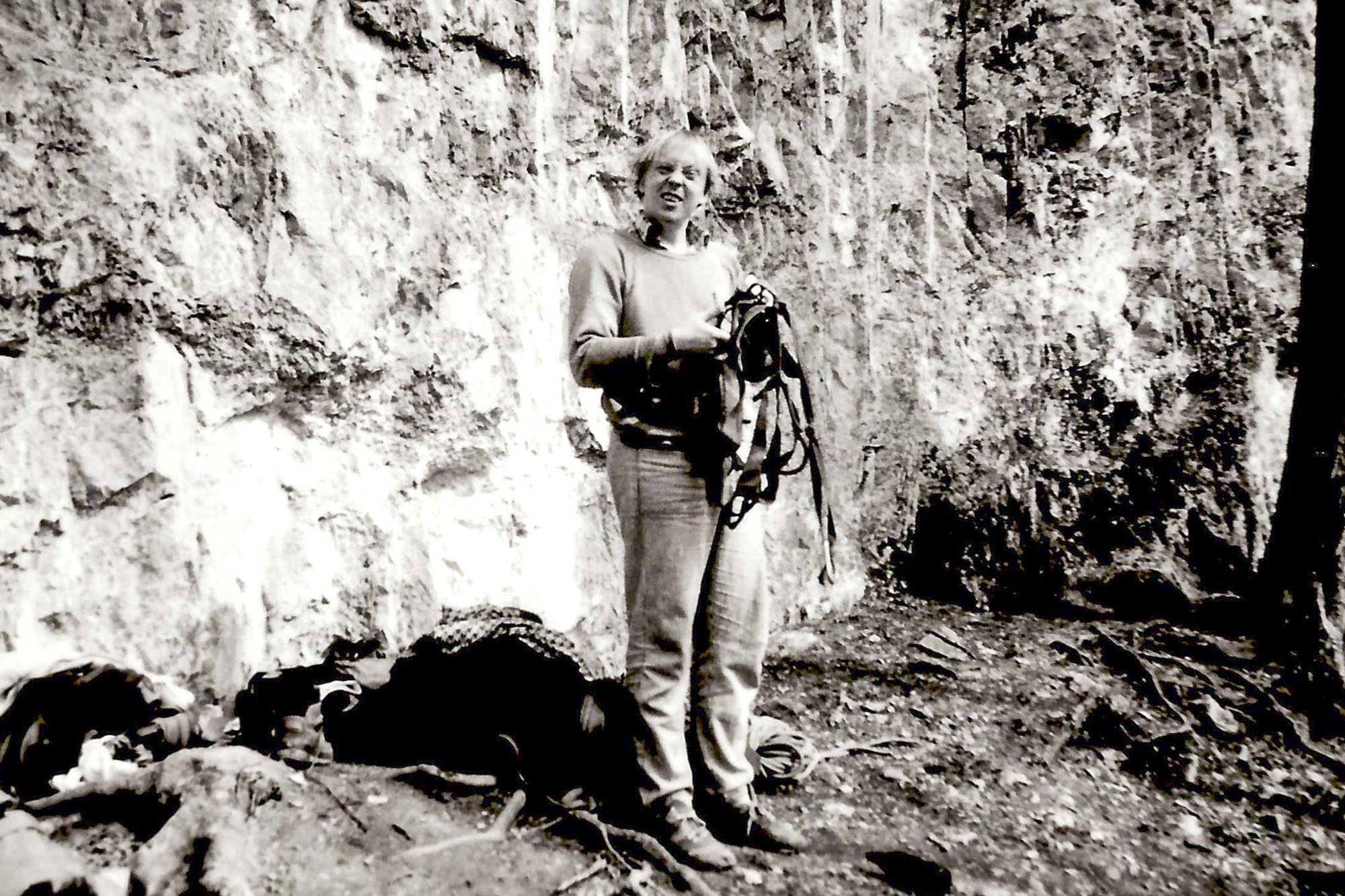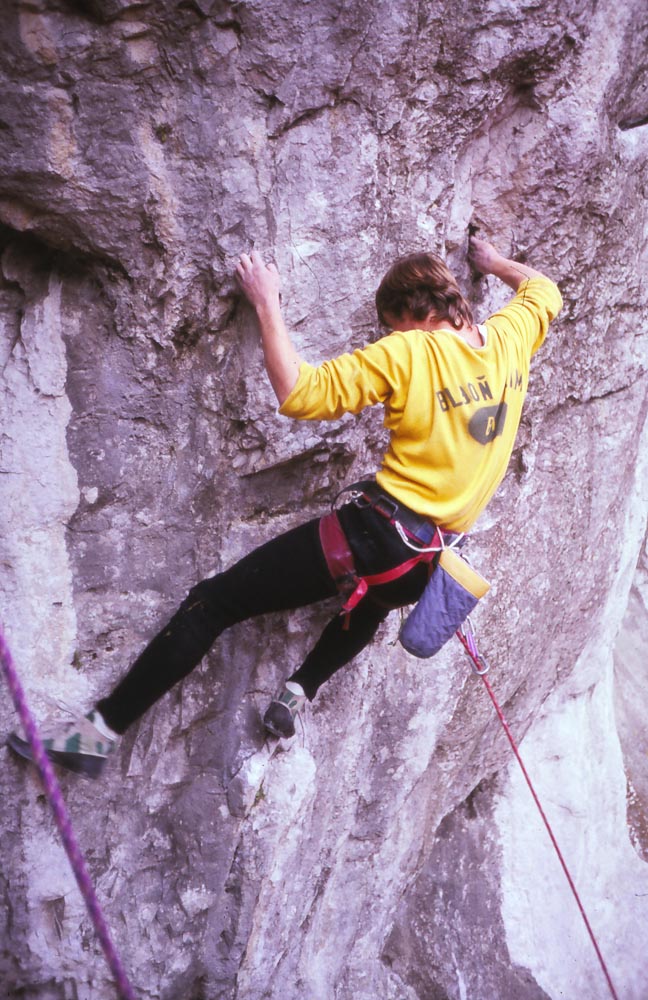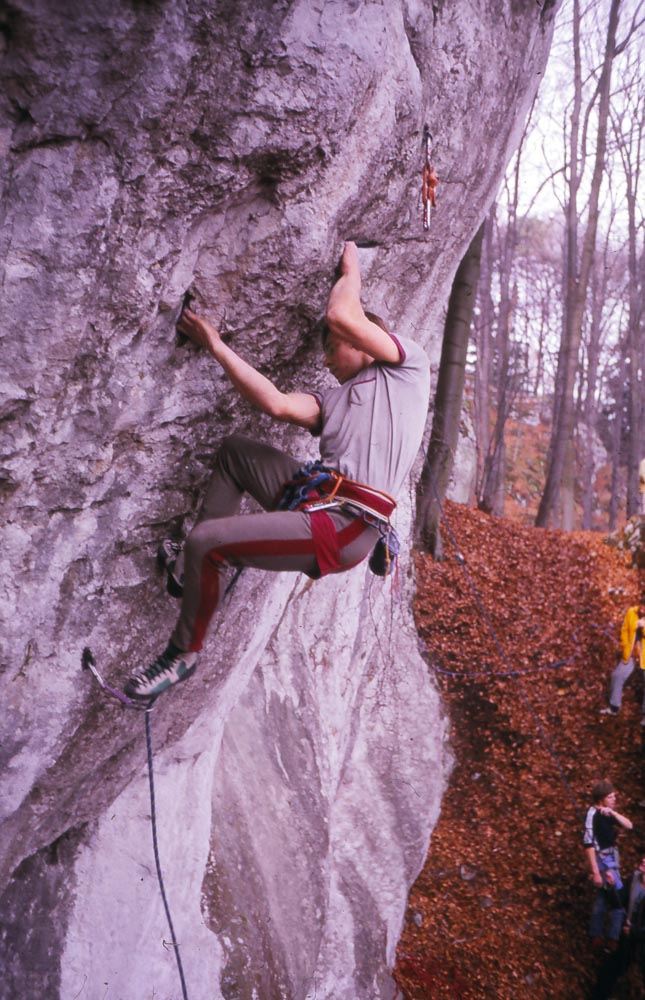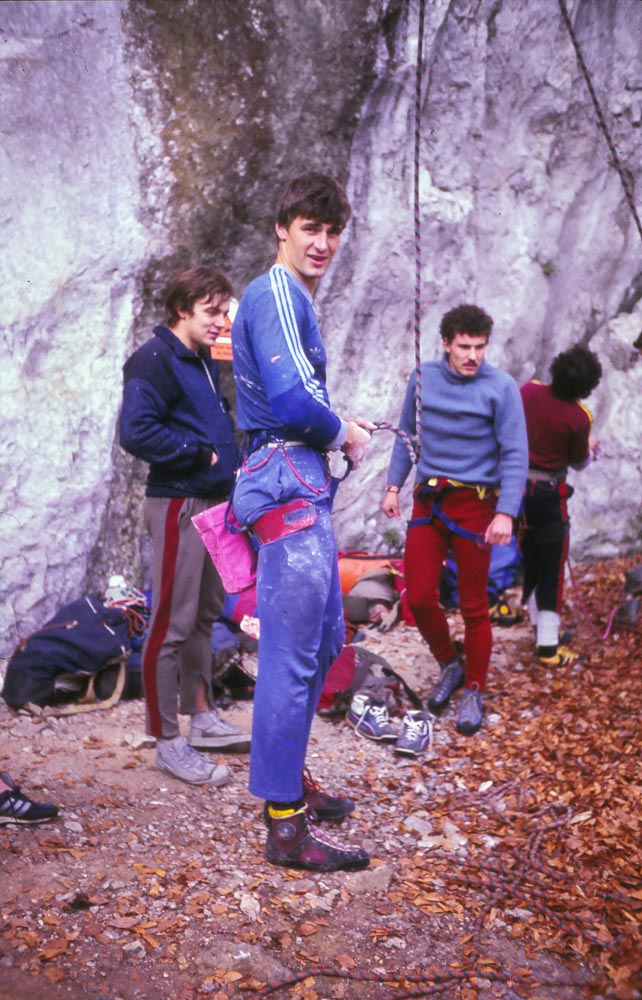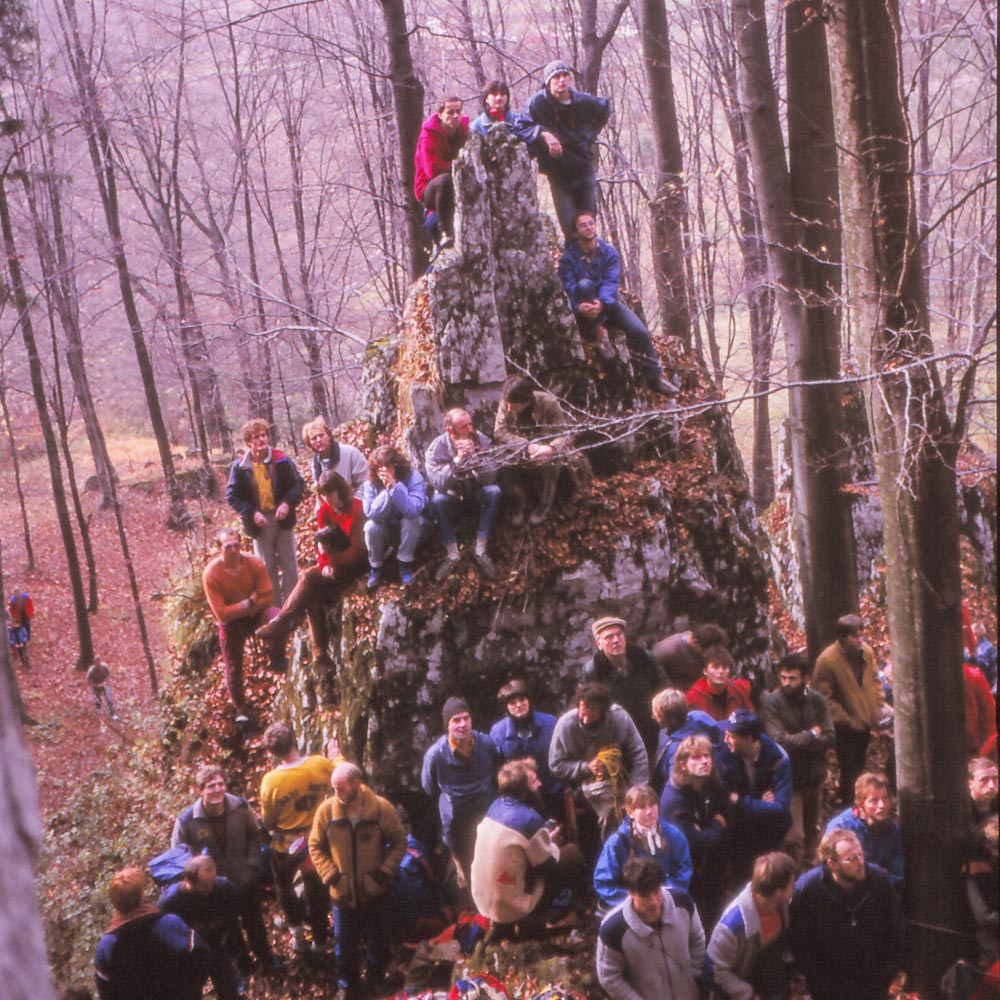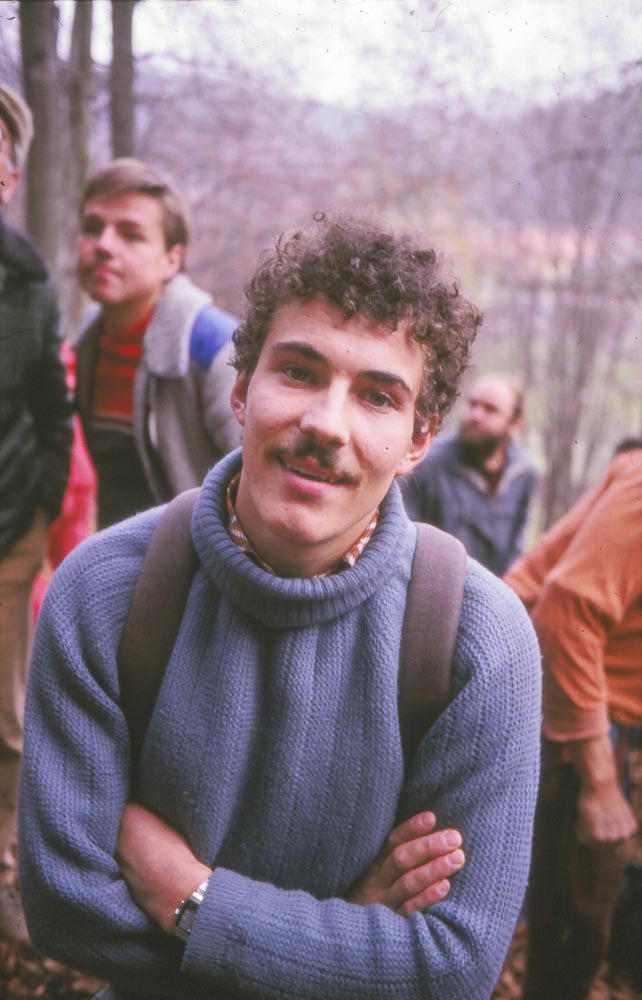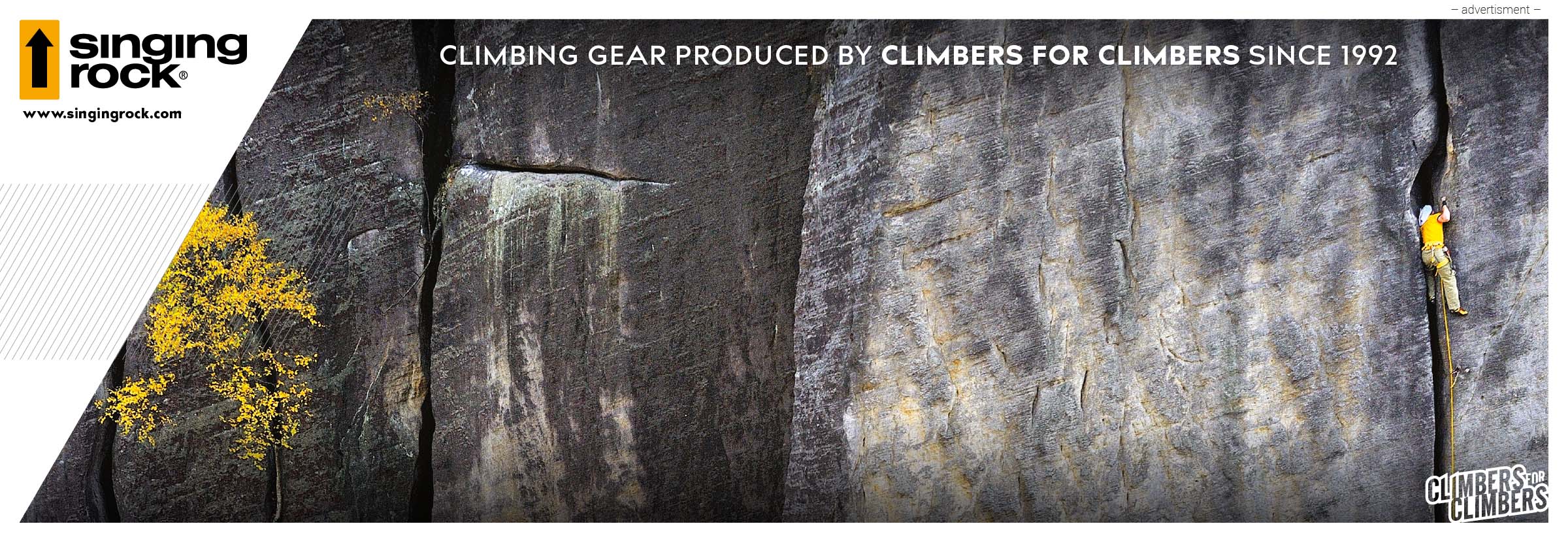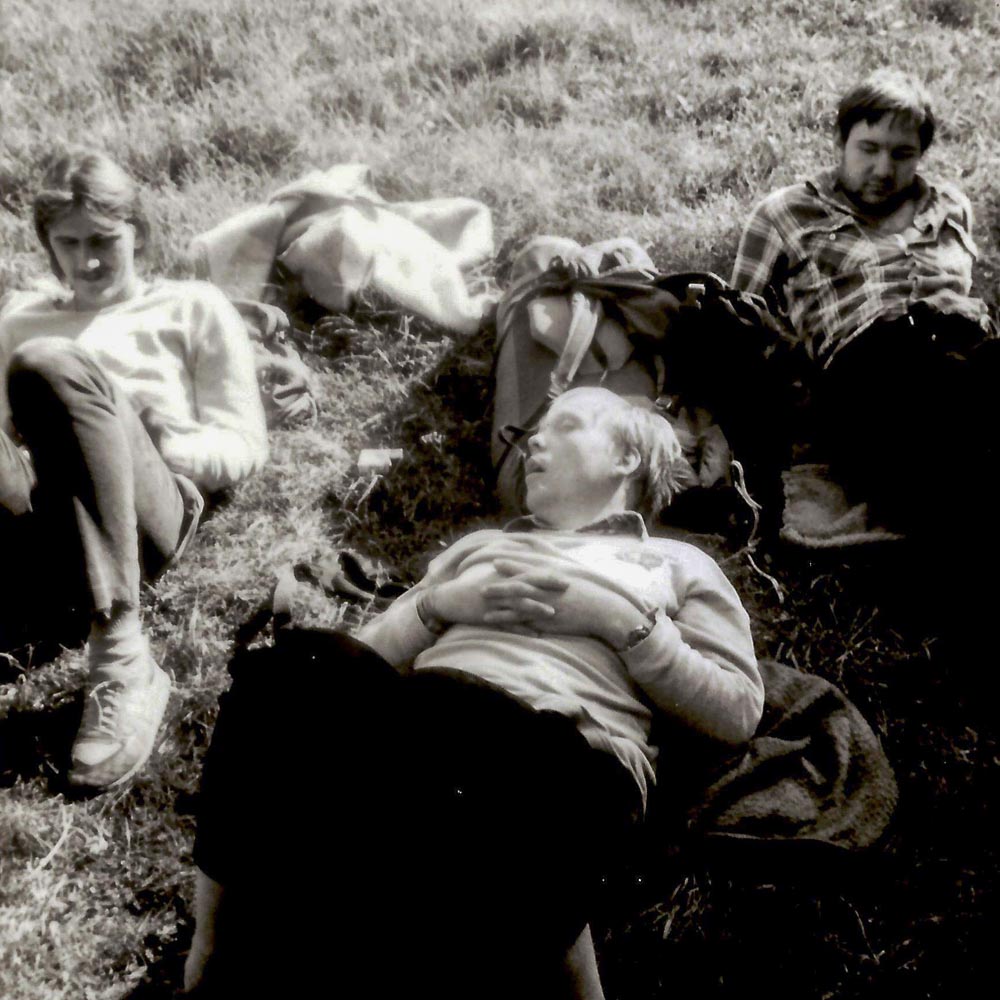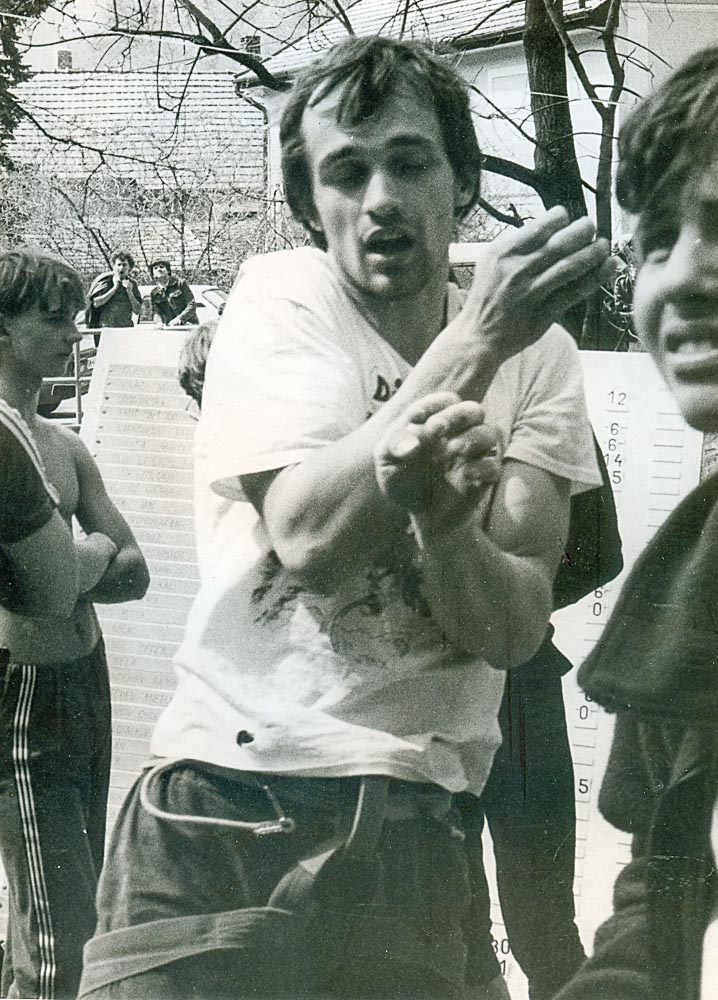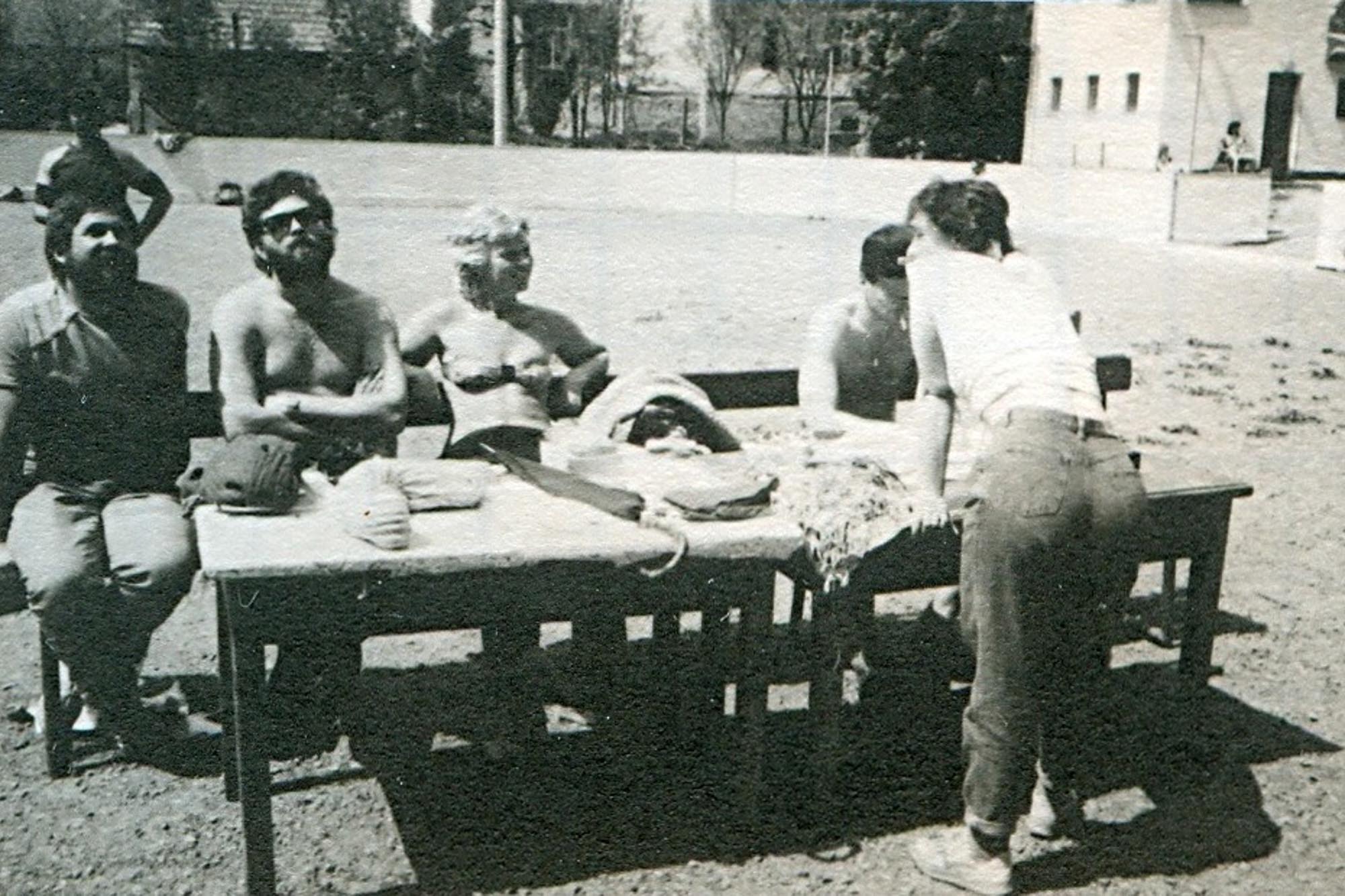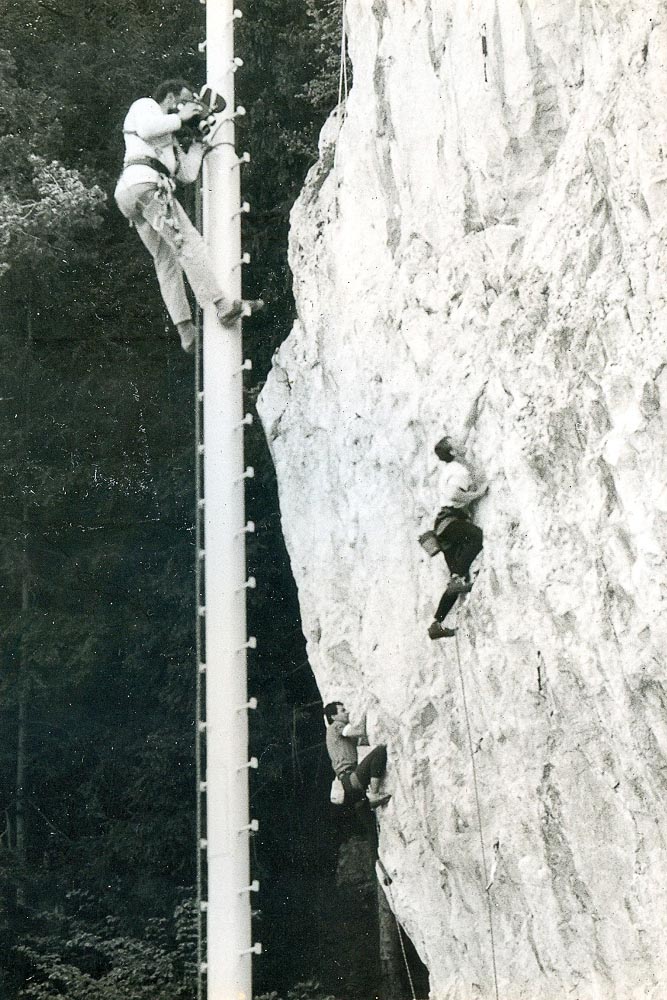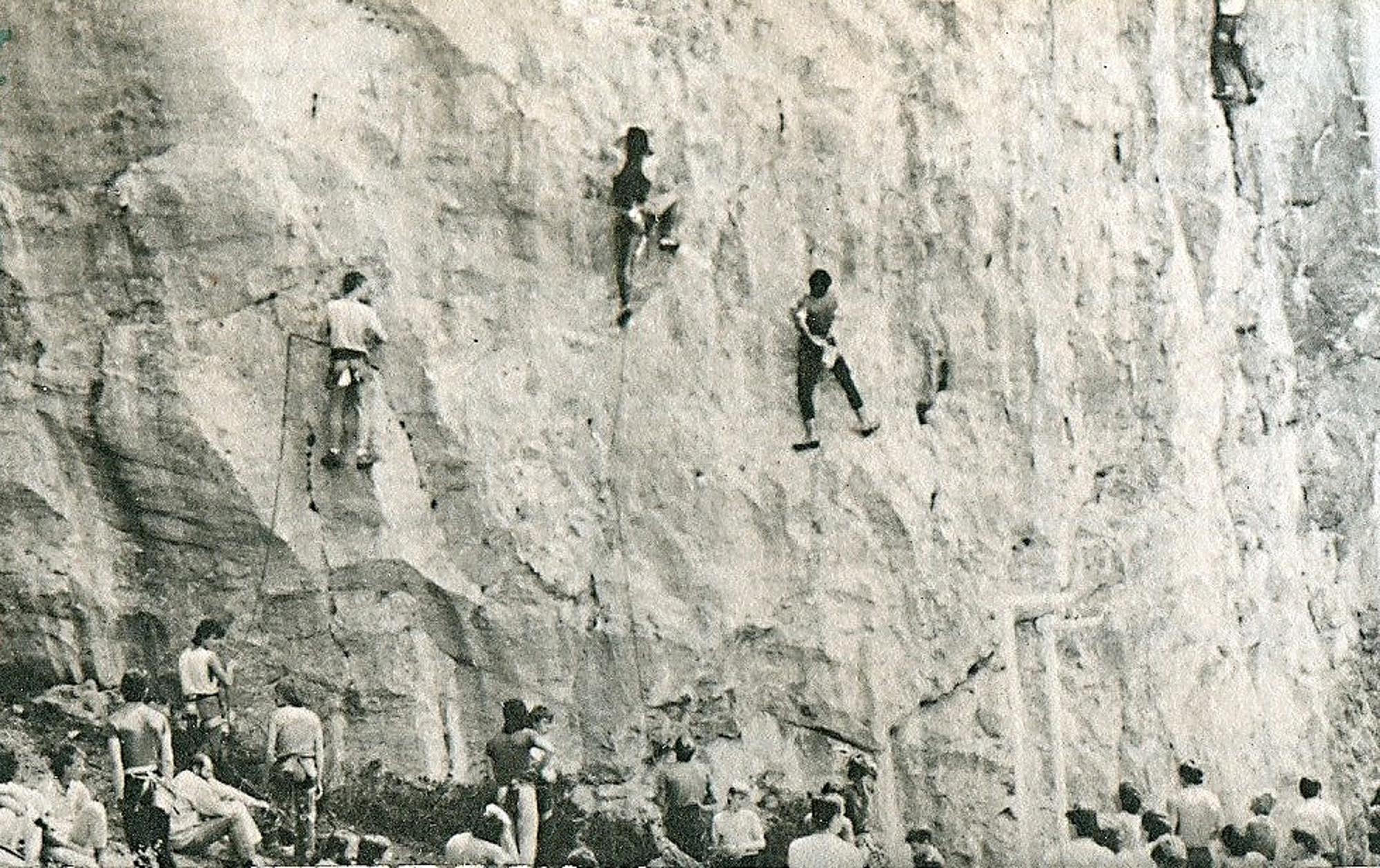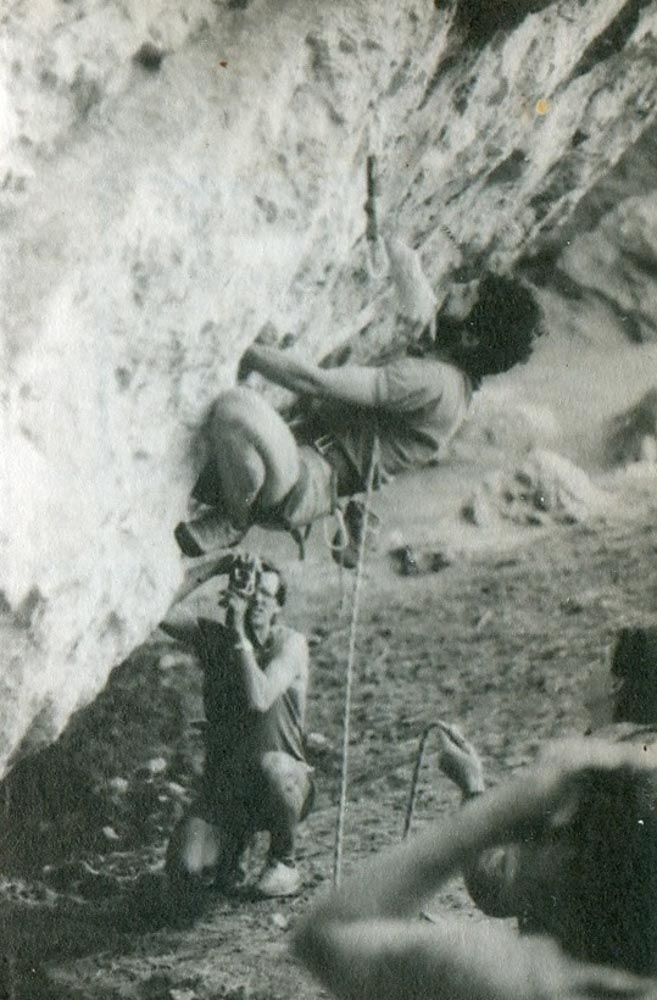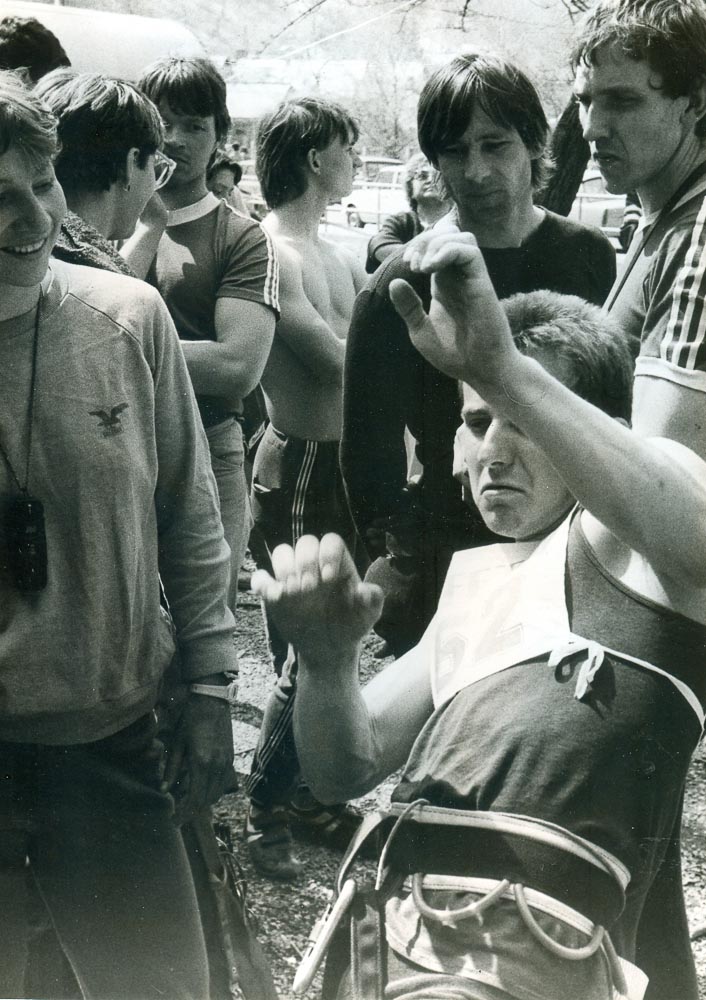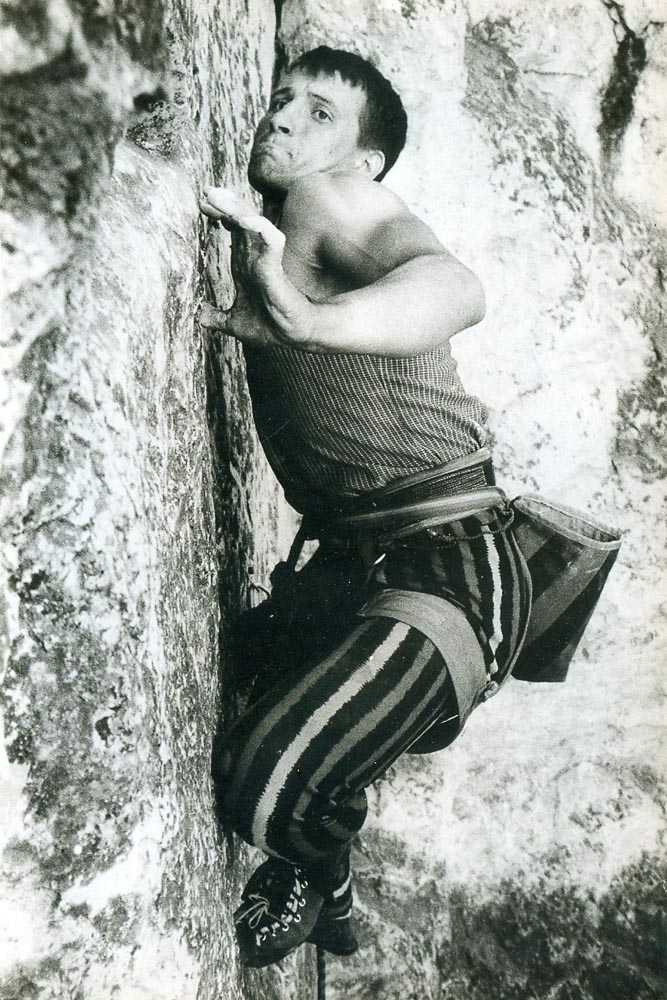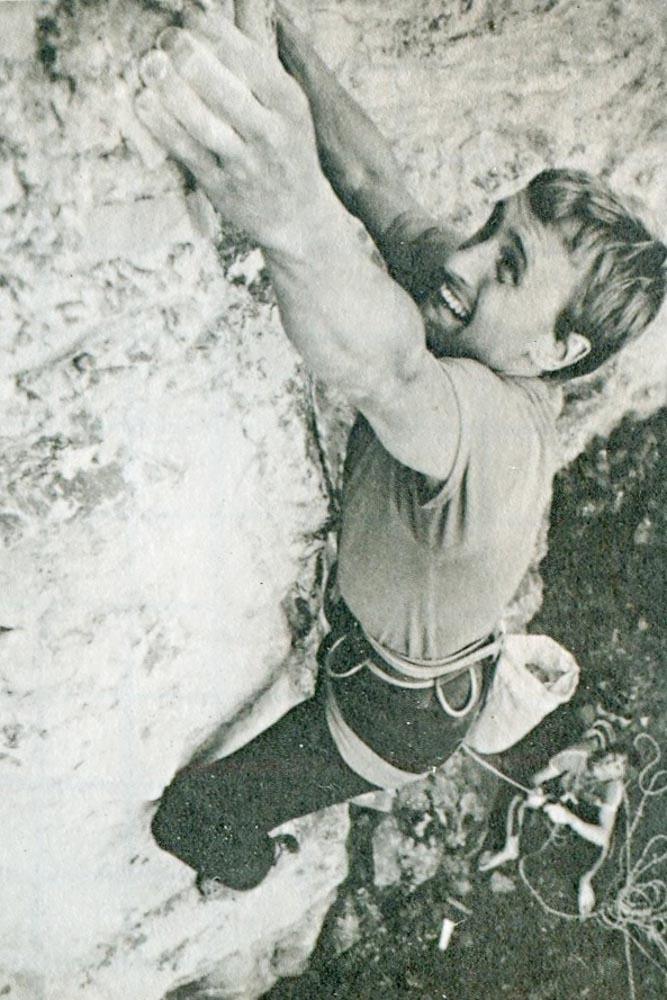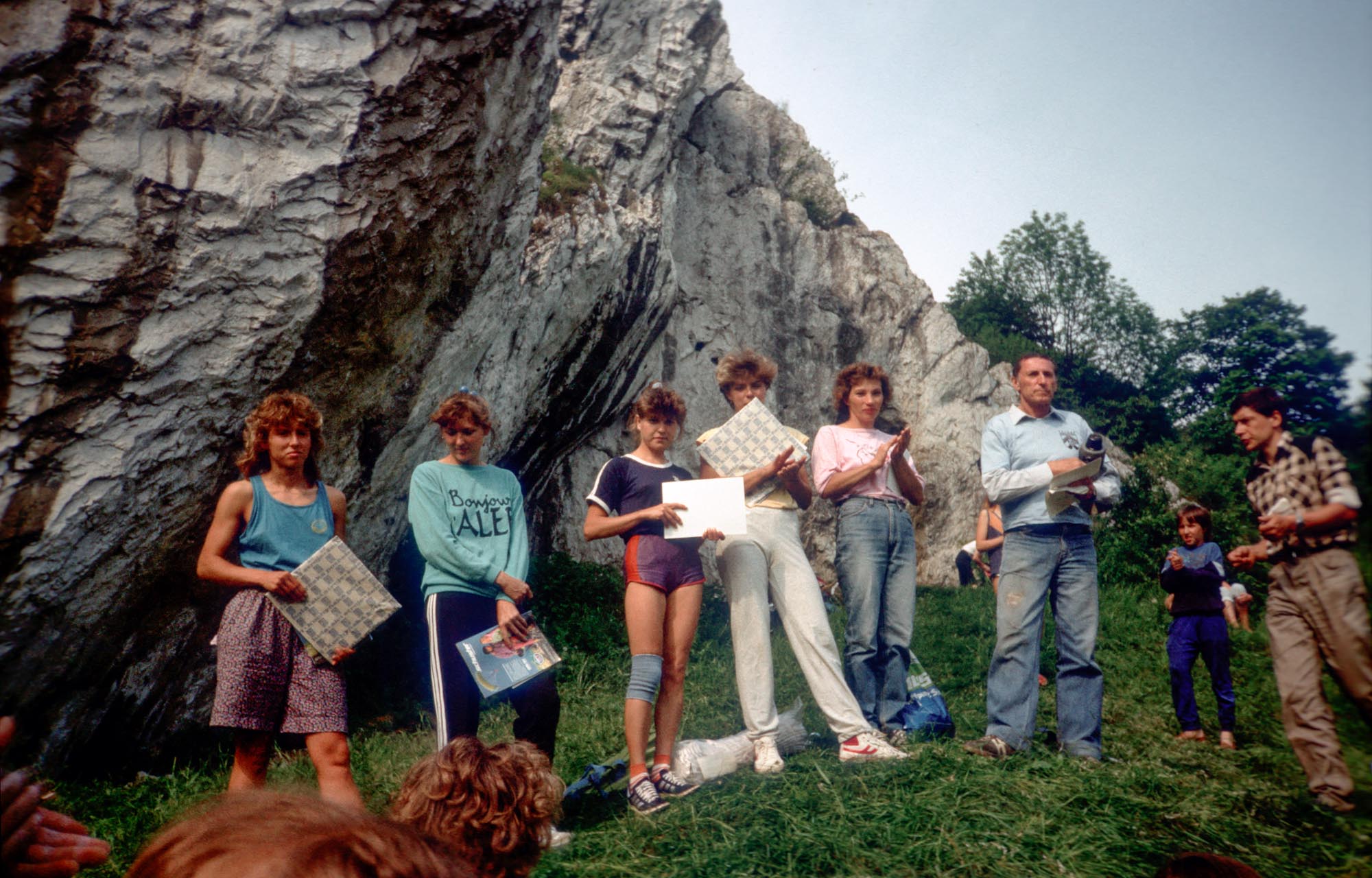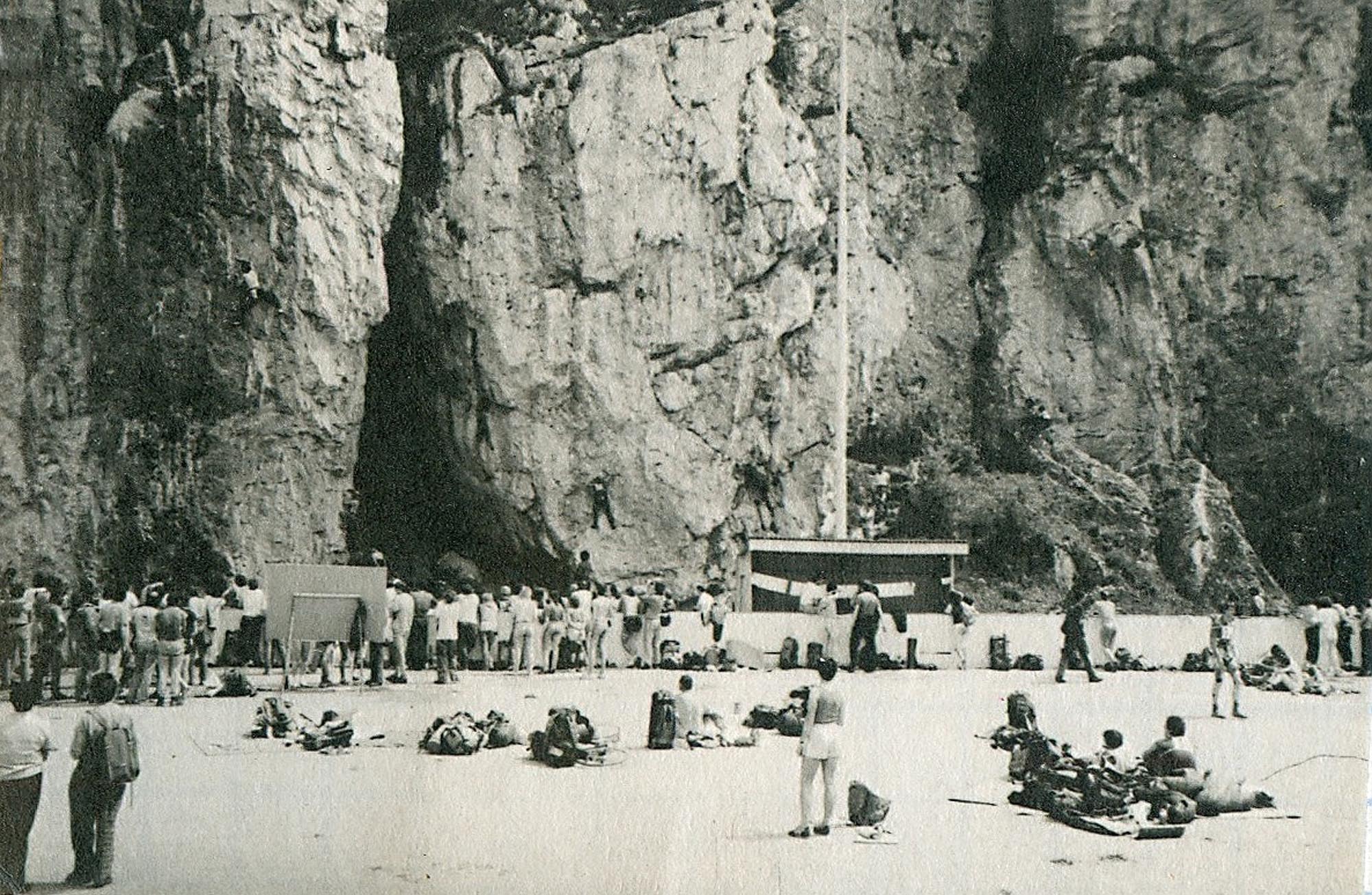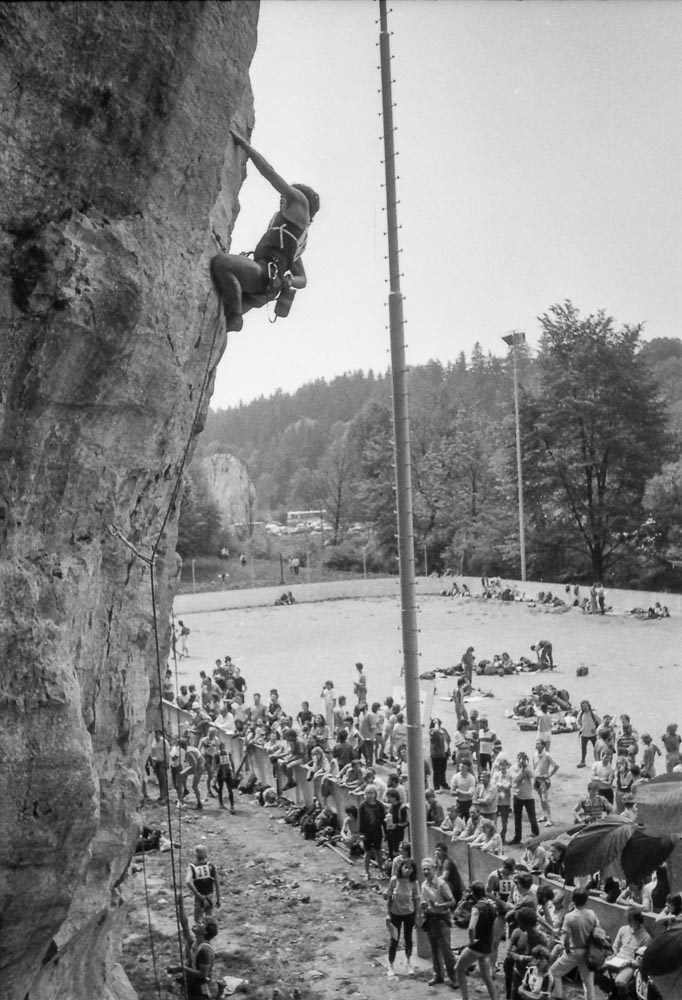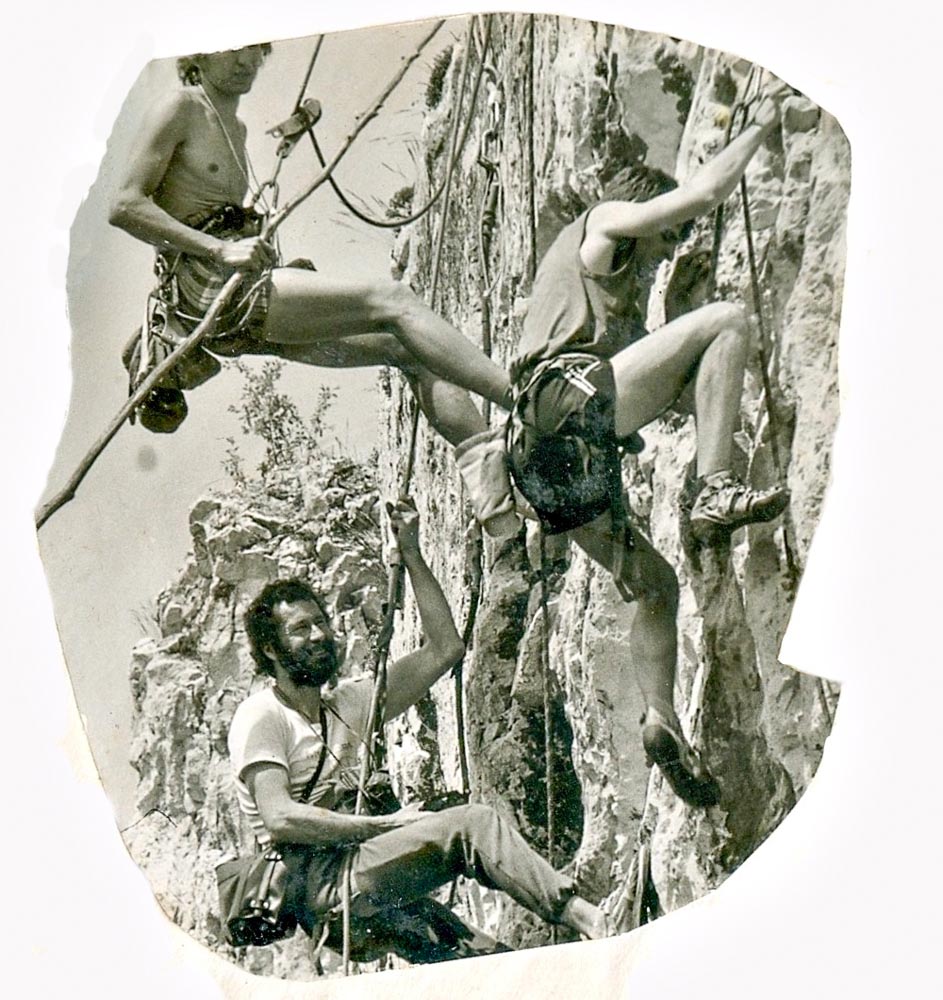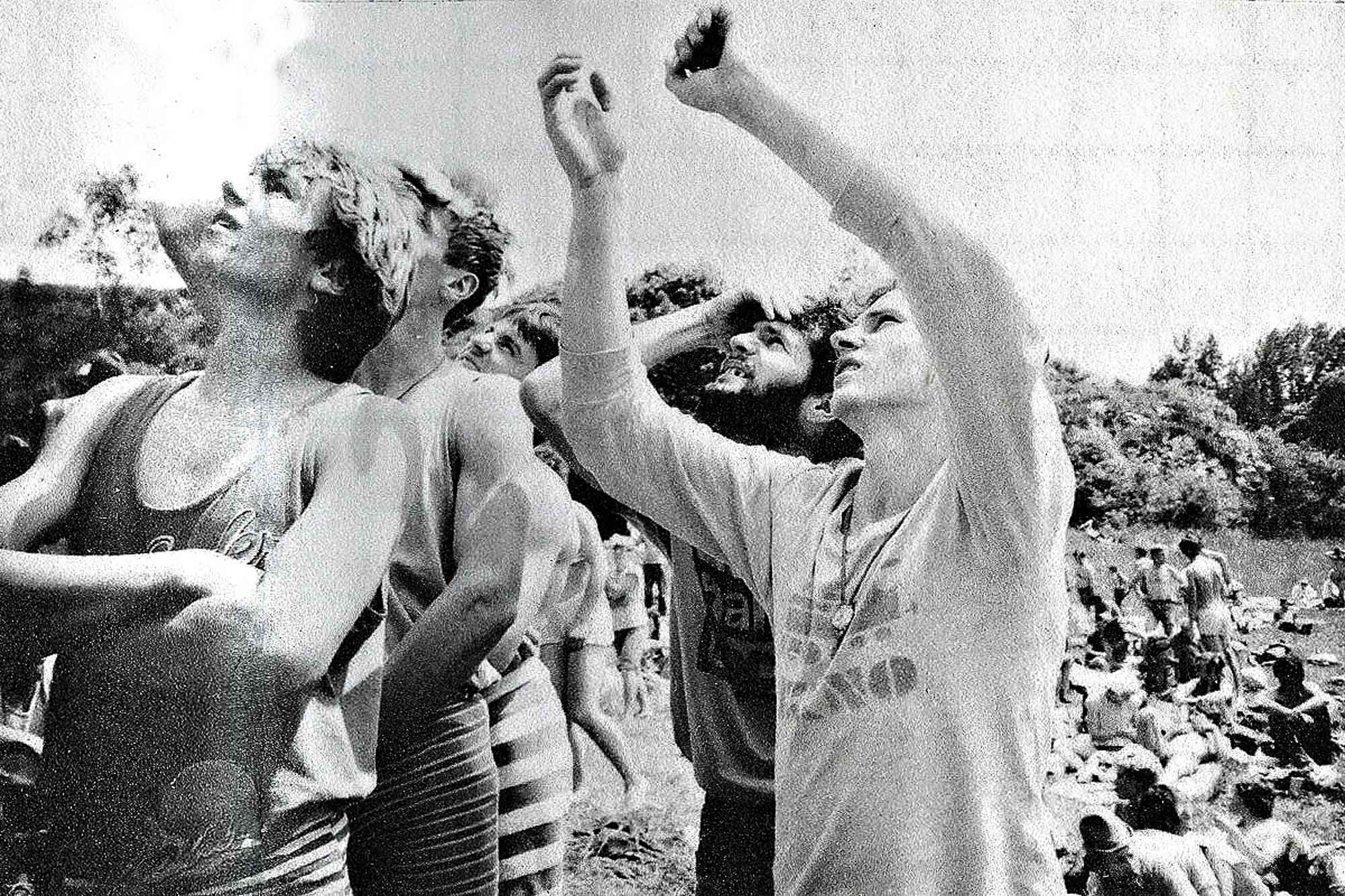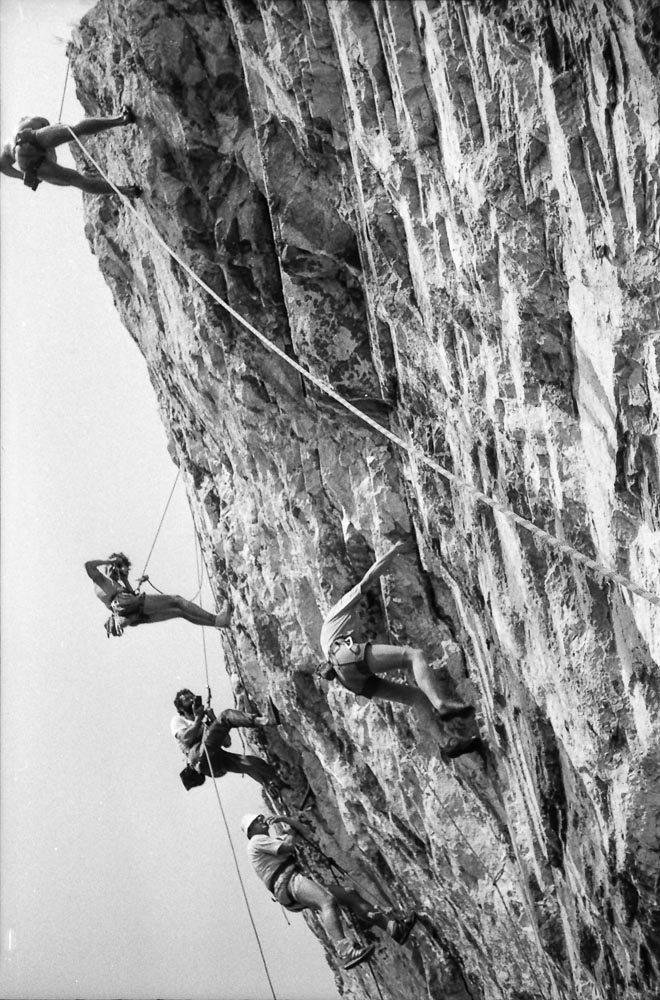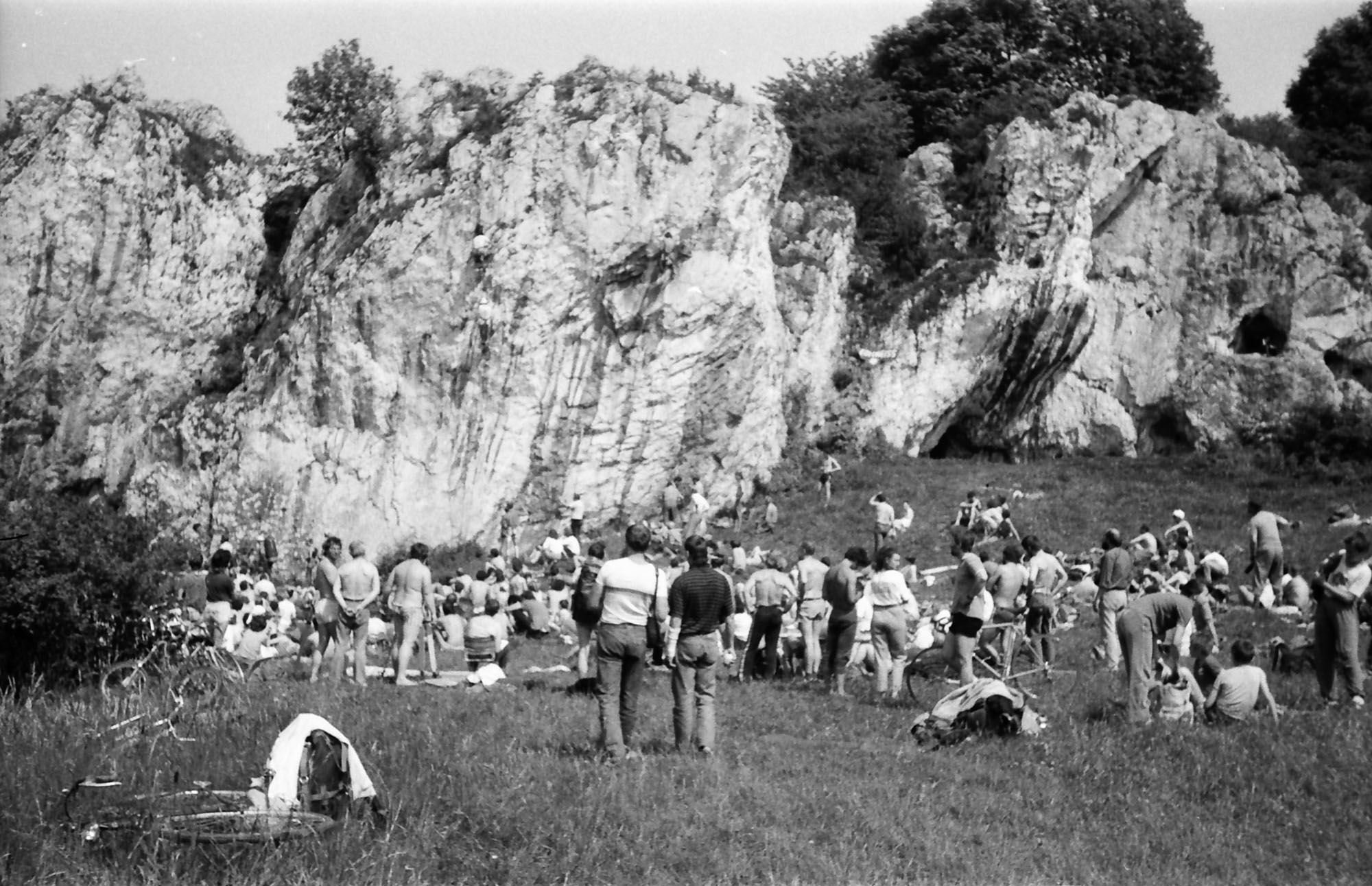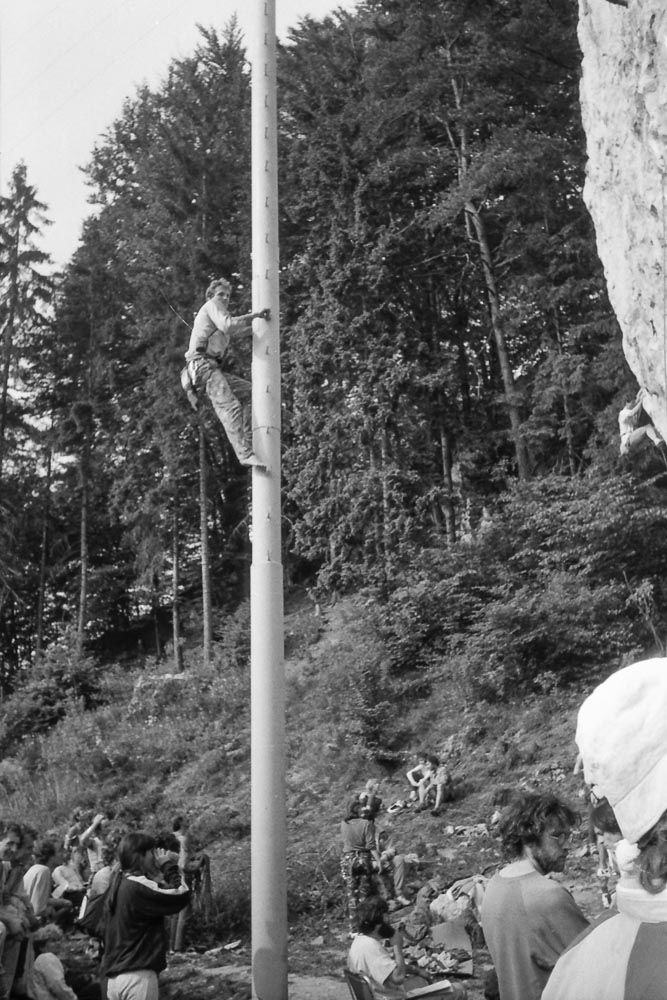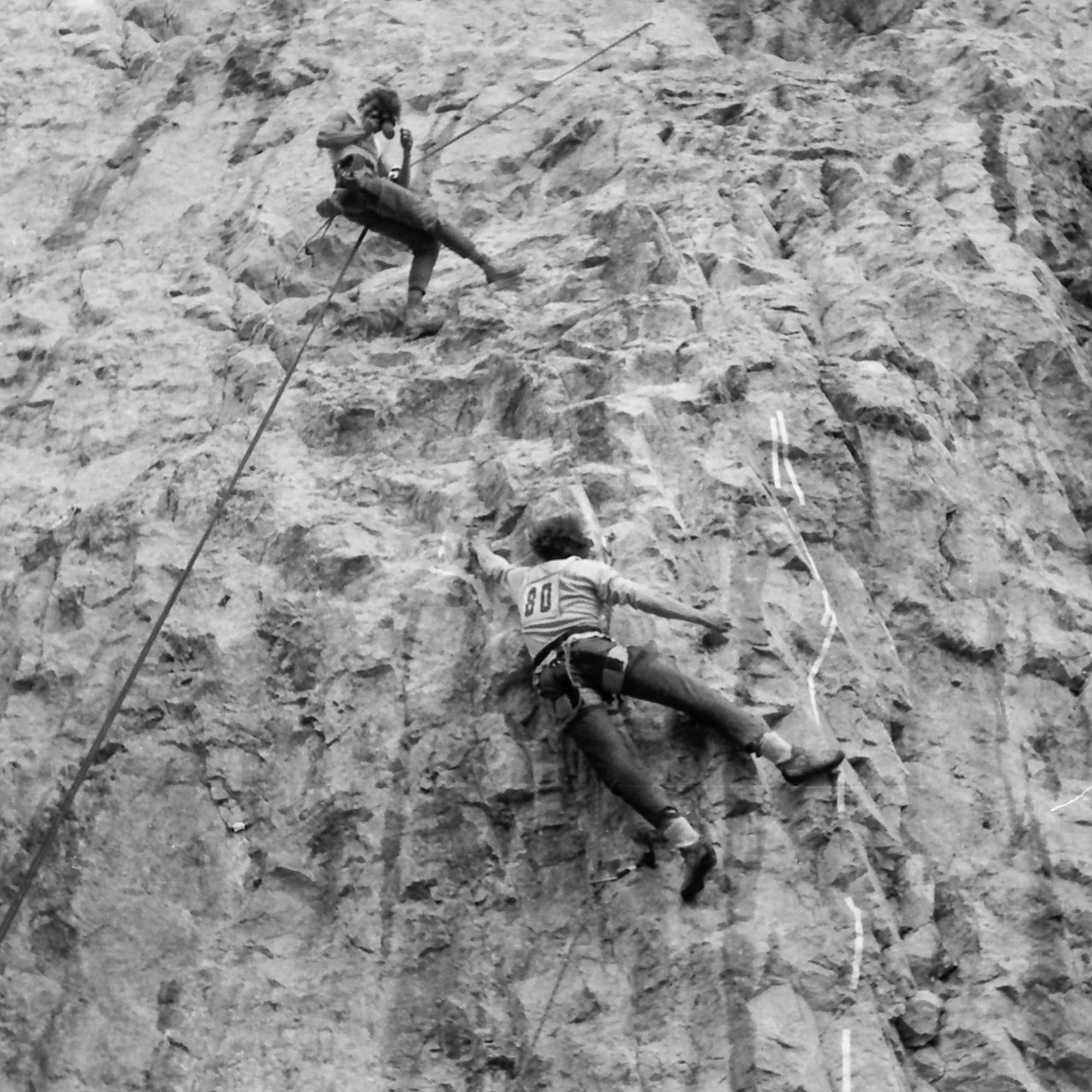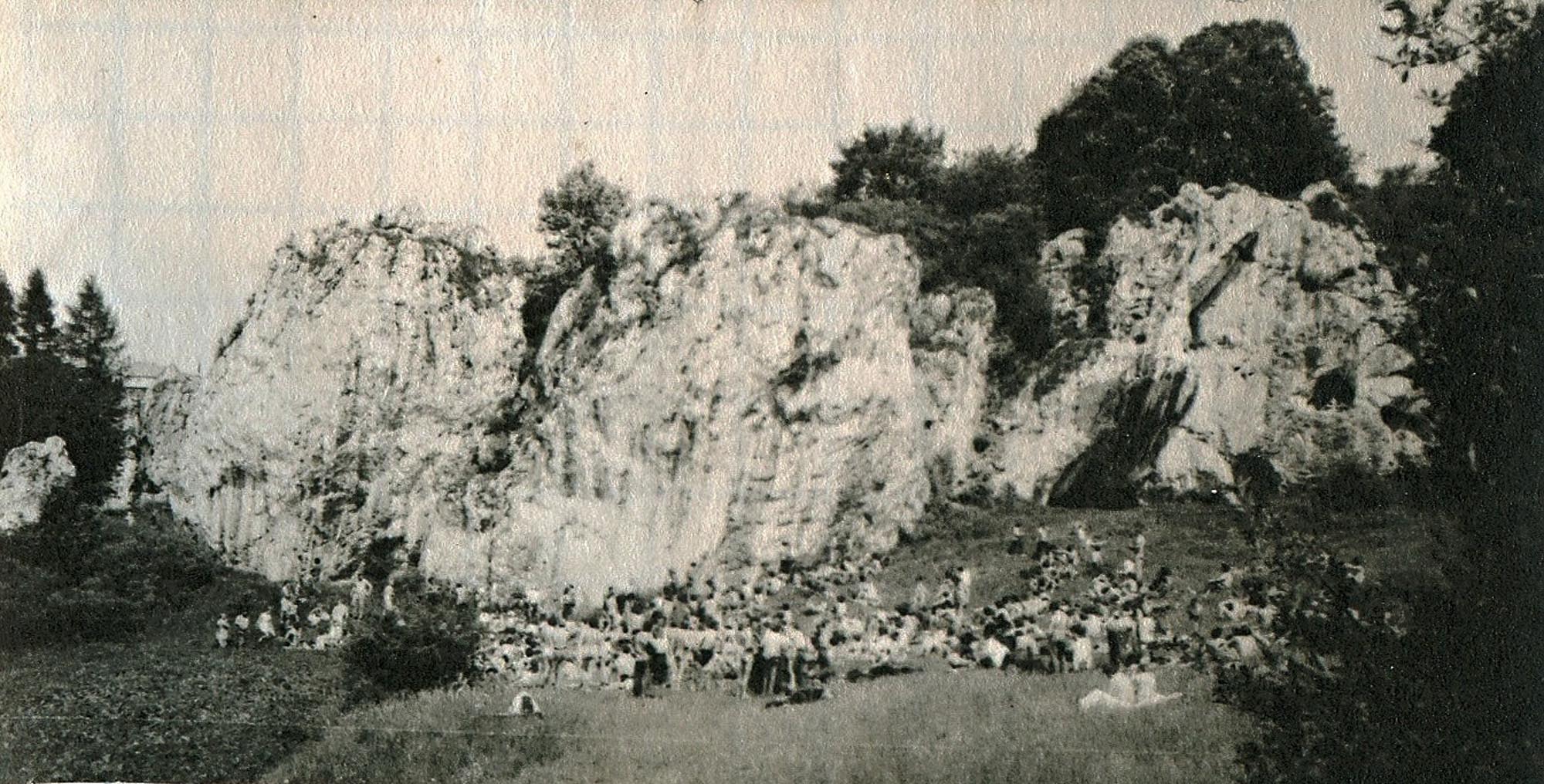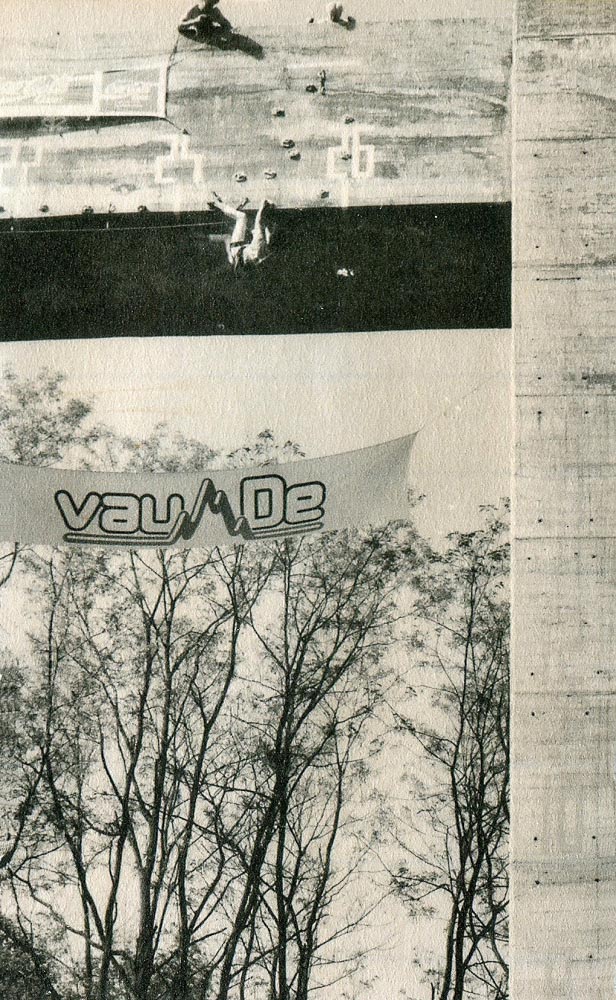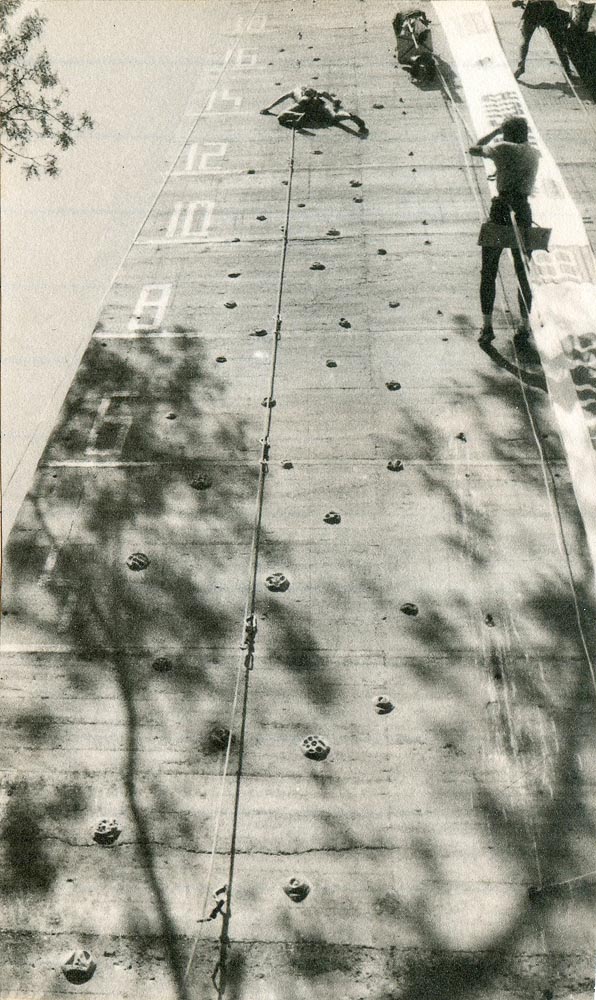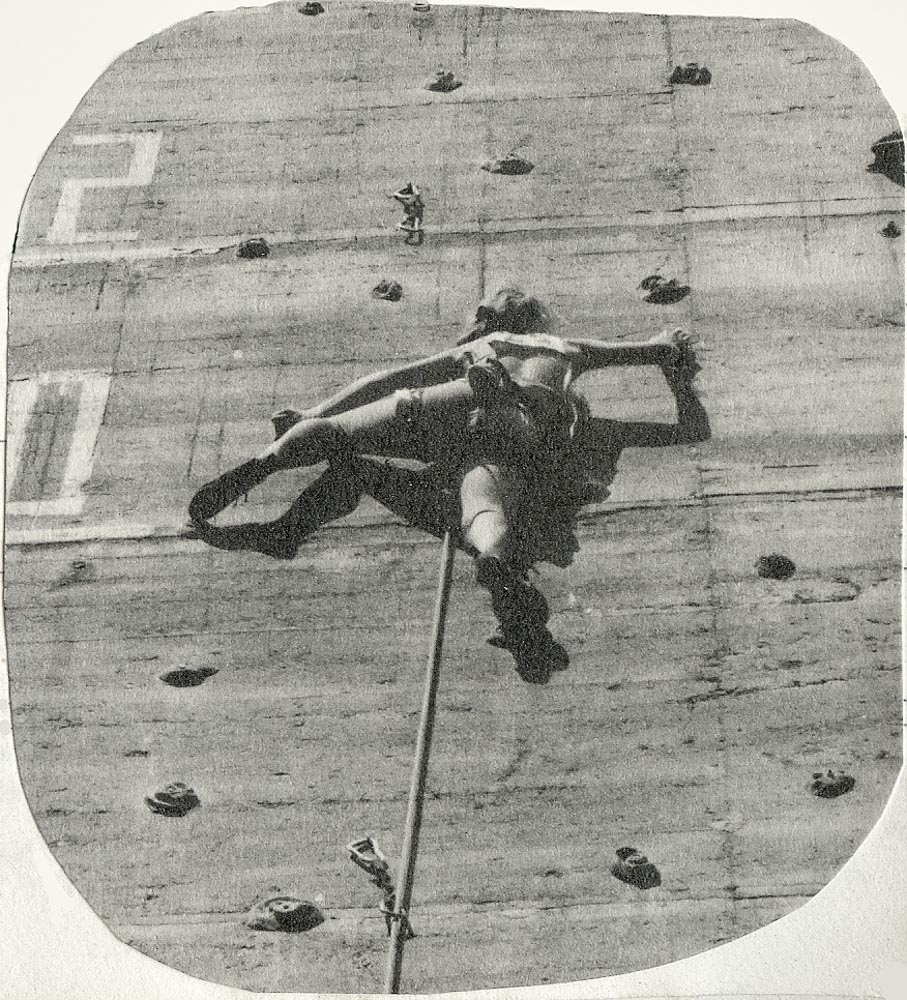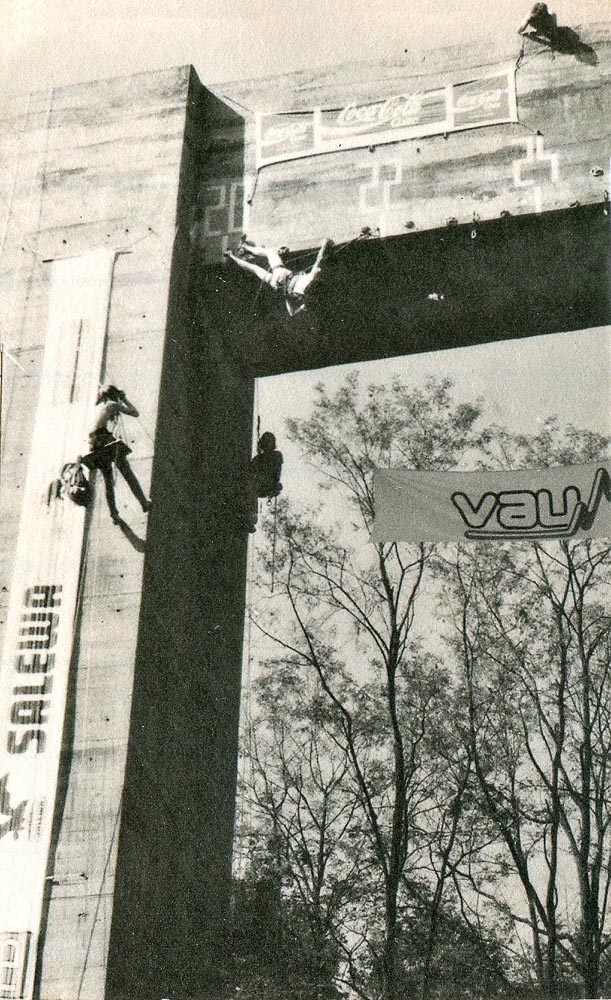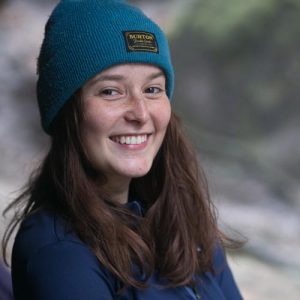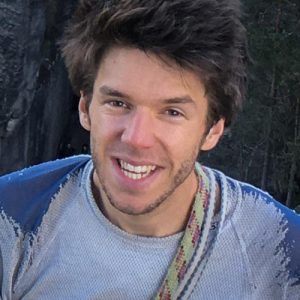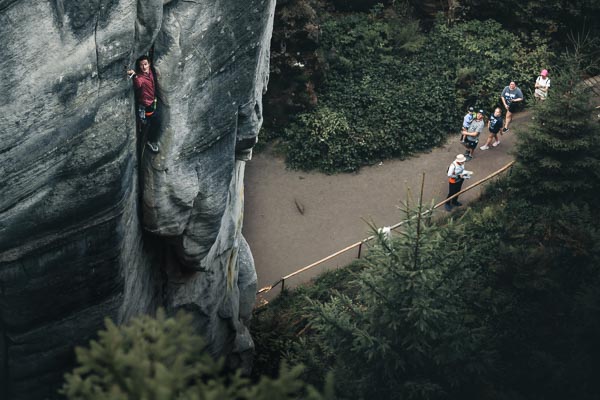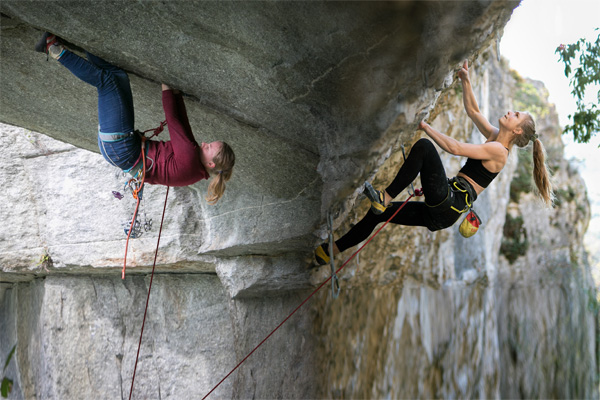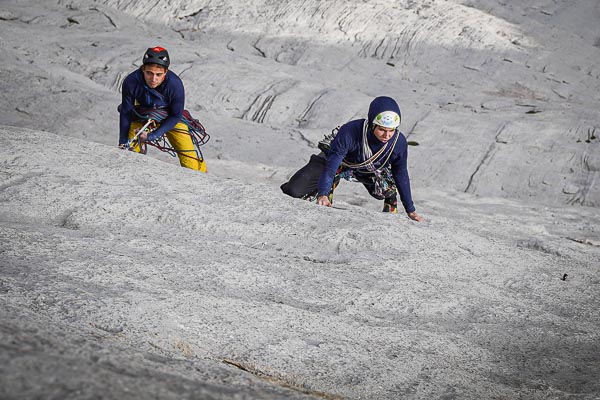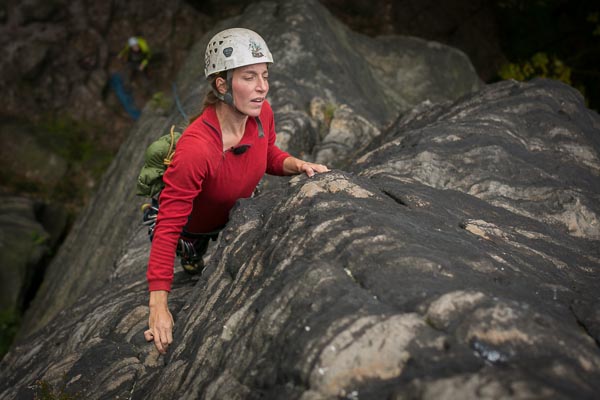FIRST CLIMBING COMPETITIONS
It was the end of summer 1986 and the Lokomotiva Brno club organized the very first sport climbing competition in the Moravian Karst. These were the times when free-climbing was still in its infancy and even training was still considered to be unusual, so a competition seemed completely alien .
INNATE ABILITIES
A wind of change into the Moravian Karst. In the late 80s, sport climbers in Czechoslovakia realized that their discipline could become much more than mere preparation for big mountaineering expeditions. However, everyone still climbed the way their bodies inherently enabled them and the word “training” was still being used to mock those who tried too hard.
The young generation of karst climbers, however, was ready to shift the paradigm. From the first attempts at free climbing, when they started holding on to just some of the pitons, climbers gradually shifted to using no aid. Honza “Drobek” Krch imported terms such as ‘All Free’, ‘Red Point’, ‘Onsight’, or Red Cross/JOJO style (after falling, the climber leaves the rope in the last piece of protection, is then lowered to the last no-hand rest, and then finishes the route without falling again). These newly defined climbing styles created unprecedented new opportunities.
PRELUDE
In the beginning of the 80s, no one had even considered the notion of competing in sport climbing. At least not in the former Czechoslovakia. There were rumors of climbing competitions at Krym, where Soviet sportsmen speedclimbed walls around 100–200 m high in their galoshky boots (which looked like wellingtons with smoothened-out soles). The beginnings of competition climbing in Czechoslovakia were quite different. In the late seventies, the so-called “Youth Climbing Competitions” were held. It was a two-day event during which teams of young climbers compared their strengths and abilities in various disciplines. It involved not only crack climbing but also orienteering and first-aid knowledge. During the orienteering run, the athletes had to wear five- to ten-kilo backpacks.
However, the run was known primarily for its dubious results. The backpacks were weighed at the start and then at the finish. “What a surprise it was when someone’s backpack weighed three kilos more at the end of the run!” recalls a karst climber Pavel Weisser. That was a bit suspicious. In the first-aid test, climbers had to prove on a dummy that they know how to resuscitate a person struck by electricity.
The competitions held in the late 80s were also quite different from the ones we have today. There were different rules, scoring systems, and the themselves climbers approached training for the competitions in a very different way. In this article, we present several different stories from the early development of sport climbing competitions in the Czech Republic.
“CASTLE CRACK” IS DRY
The first official competitions took place in 1986 over two days in September. They were enthusiastically organized by the team of Lokomotiva Brno. The Brno team gathered judges, photographers, chose the most difficult routes in the area, and soon, every climber in the country knew that the big day would come on Saturday, September 1st. The qualification round took place on selected routes in the Buč area. The climbers divided into groups, and whoever got to the highest point advanced to Sunday’s finals.
But on the Sunday morning, the rain came.
“It’s raining on Sunday and the finals are being called off. Yesterday’s results will be announced. Then it stopped, so the calling-off gets called off. We’re running to the Lidomorna cave. The finals will take place in its area,” describes one of the event’s photographers, Honza Vlasák, in his diary.
- Mára Žák recalls the finals:
What made “Castle Crack/Hradní Spára” (10- UIAA) on the Lidomorna crag interesting was the fact that nobody knew how to get past the initial boulder problem. Jindra Šustr, who was not partaking in the competition, climbed it first to show others how to solve the crux. Then the competition started. Svišť climbed the boulder and got about three moves above it. Jindra got just past the problem and fell. Zdenál Konečný climbed it in a different way – he got a little higher, which is how he managed to get third place back then I think. - Tomáš “Svišť” Pilka describes his memories of winning the competition in 1986:
A route that no one knew was chosen for the finals, it was somewhere near “Souhra Náhod” (8+/9-). At first, it was raining, so the finals got canceled. But then it stopped and they decided to choose the “Castle Crack”, which I already knew. And I won it. Onsight was not the goal – each climber had three attempts. Moreover, the competitors could watch each other climbing. From today’s point of view, the competition was not that objective. The only thing that mattered was to get higher than the others.
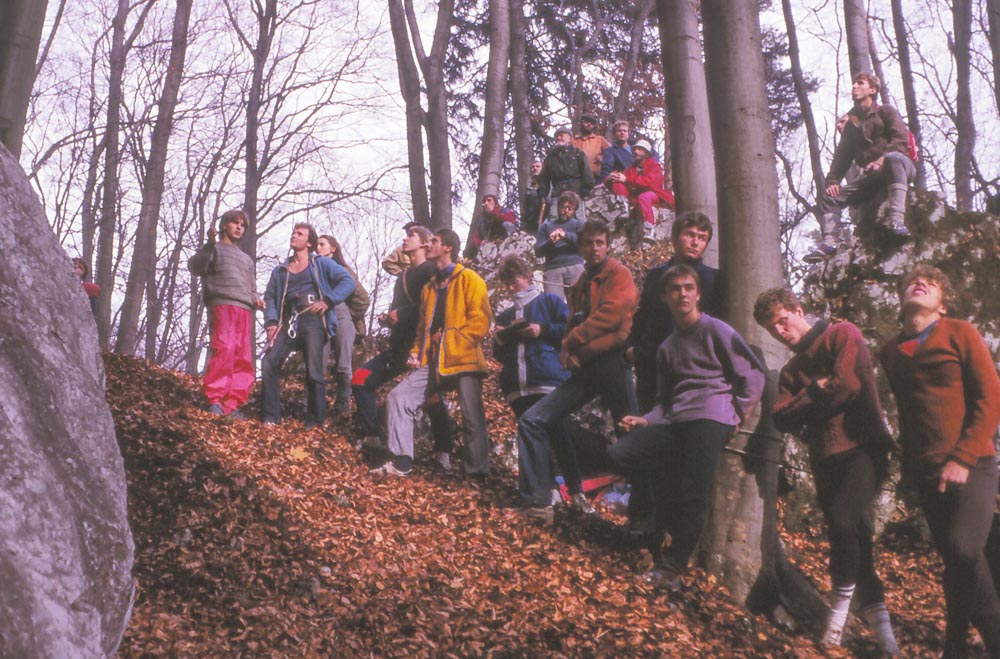
On the left Tomáš “Svišť” Pilka, next to him Pavel Weisser (p: Mára Žák, 1986)
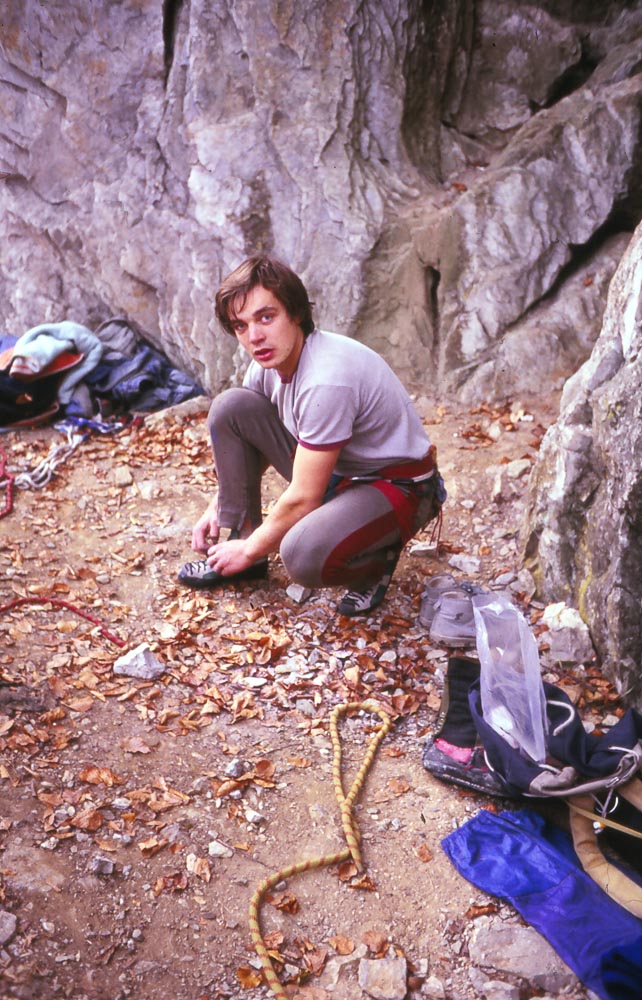
“Čumpelík” Šustr (p: Mára Žák, 1986)
“Drobek managed to knacker himself dancing. He danced with a girl around 20 years younger, for several hours non-stop. She did not get to the finals, so she didn’t have to save her strength for the following day.” Notes of Honza Vlasák.
Some climbers objected to Svišť’s victory. The climbers from Brno had an advantage because they knew the routes. Moreover, Svišť was one of the few climbers who did at least some training. He had a campus board with holes and crimps hanging over his door. “We were mocking Svišť for doing pullups. The rest of us climbed according to our natural physical abilities – there was no training then. But Svišť got highest of us,” laughs Pavel Weisser who, in various positions, took part in most of the early competitions in Karst. “I remember standing under umbrellas and looking at the ‘Castle crack’. At Holštejn and later also in Sloup, the height reached by the climber was measured by theodolite. There were always two guys hanging on a rope and showing where exactly the climber reached.”
The second year of Karst competitions is the one most climbers don’t remember. It was raining, everything was muddy, and for various reasons many of the last year’s climbers did not even attend. In the spirit of tradition, however, a party was held at the local hotel Lipovec shaking the hotel to its foundations. The Sunday finals also happened in a similar spirit to to the ones of the first year and, again, the weather chased the climbers onto “Castle crack”. This time, Zdenál Konečný won, getting to a similar height as Svišť had in the previous year.
BREAK BEFORE HIMALAYAS
The third instalment of the annual competitions moved to May with the hope of striking better luck with the weather. This time, the climbers from an expedition to the Himalayas attended, including the notorious Míra Šmíd. On the way from Italy, a group of Slovak climbers led by their leader Igor Koller also stopped by. They hopped off the train so they could take part in the competition and then continued their journey home.
The scoring system changed. During Saturday’s qualification rounds taking place in Sloup, each competitor received a card onto which they charted the points they scored from the pre-selected routes. The height to which the competitor climbed determined their overall score. The race ended at 5 pm and whoever had the most points advanced to Sunday’s finals.
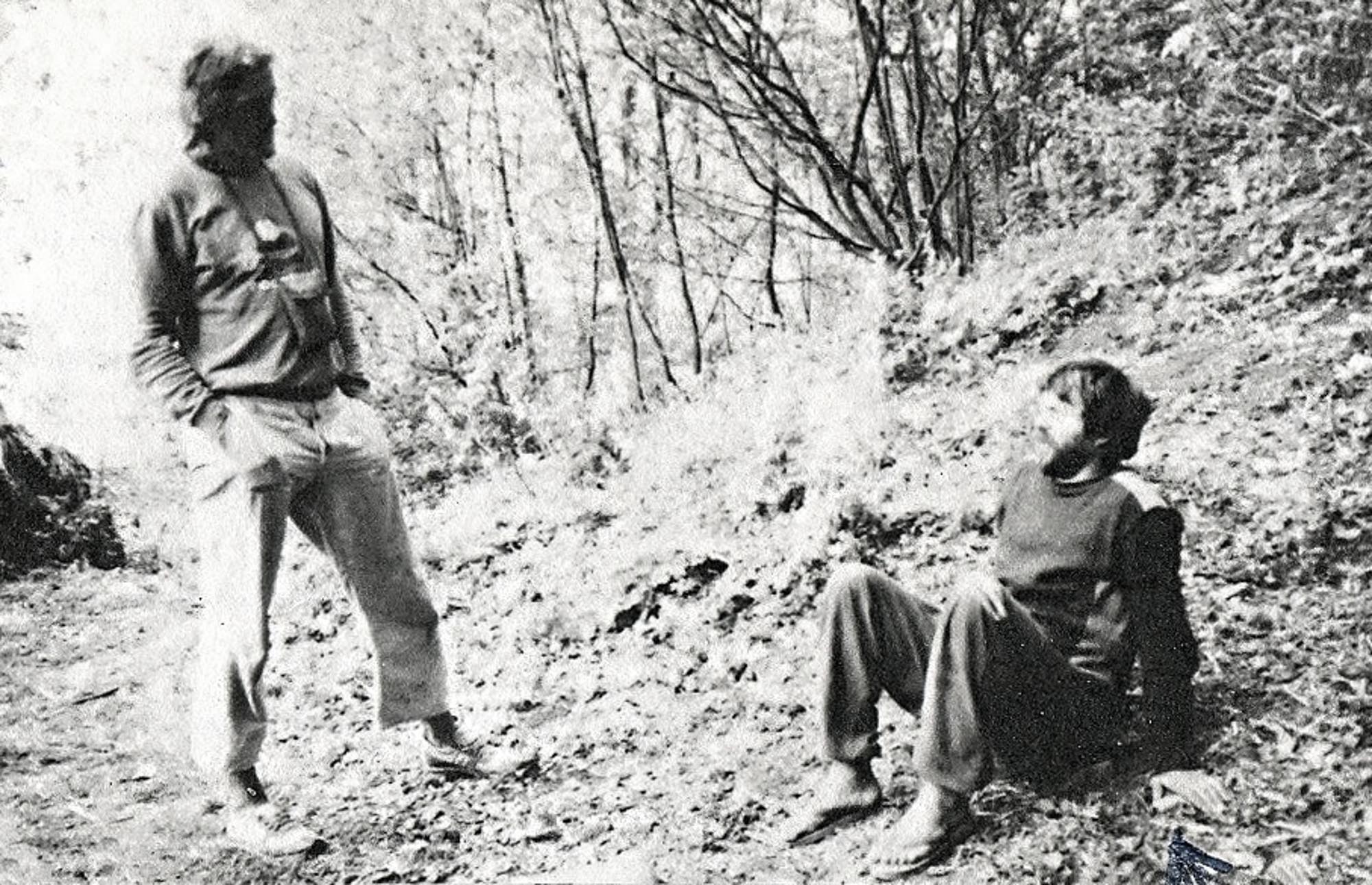
- Jirka “Blboň” Nešpor, then 18, describes the competition in 1988:
Routes were marked. There were colored ribbons attached to the rock that lined the corridor in which you could climb. Those were the years when free-climbing was born. Not everybody could get all the way to the top back then. Some Slovaks joined the competition as well. The climbing clubs sent their best. We slept at the hotel Na Lipovci and had a great afterparty. Everyone got absolutely hammered. There was a final competition planned for the following day but in the morning, some of us kept on drinking and only later, we managed to scramble up the hill to the crag.
The final route was “Princ a Chuďas” (9-) made by Čumpelík. Sveťo Poláček climbed the route almost onsight but then he broke a hold right under the top. Because of this it was determined the other finalists would technically be competing under different conditions, so we had to organize superfinals. This time, the finalists had to do the direttissima variant of the “Castle Crack”.
“It turned out to be quite a fight. It was meant to be a competion and it did not disappoint. There were quite a few spectators as well! Rudo Mihál finished first. Just after the race, we packed up and made our way home. The sad thing was that Sveťo Poláček later died while working. He was one of our most talented climbers,” concludes Ruda Tefelner who returned home to Slovakia with a silver medal.
“Zdenál got drunk yesterday, allegedly because he wanted to have an excuse for not winning today. He will have to climb a route he has never practised before.” Notes of Honza Vlasák.
Generally, the atmosphere of the Karst races was lively. There were plenty of spectators who came to see some of the classic aid lines free-climbed. Each year, there was a women’s category as well, and sometimes, there were even some athletes from other countries. “One year, Russians joined the competition,” adds Pavel Weisser. “I remember their coach sitting there on beer boxes, drinking bottles and shouting at his team with a megaphone. Every time one of his climbers got pumped and started shaking, he shouted: “Maladěněc, tibě nado prajti!” (“You’ve got to climb on, lad!”)
“In the evening, we are relaxing in the Zlatá Lípa hotel. There are four of us for each of the beds we have paid for. Nothing unusual for us lot though.” Honza Vlasák
THE WINDS CHANGE ONCE MORE…
In May 1989, the last sport climbing competition took place outside at the crag. The qualification rounds took place in Sloup and the finals on the following day in Rudice.
In the fourth year, the organization and preparation for the races evolved once again…
- Mára Žák recalls the changes brought about in the fourth year:
Everyone knew the planned competition routes. The week before, the climbers from Prague and the Slovaks drove in and practiced the lines. They went through them move by move. Of course us locals had it easier. The scoring system was based on the highest point reached along with the number of climbs. That year, those who advanced to the finals climbed almost everything. I climbed everything except “Předstartovní” and “No future” and advanced to the finals as one of the seven climbers.
On Sunday in Rudice, we had to climb “Výlov” (7-), “Šípková Růženka” (8) and “Jasná páka” (8-). “Šípková Růženka” includes a hard move only Čada, Tufi and Mihál could do. These three advanced to the superfinals and a route called “Možnost Volby” (9+) was waiting for them. Tomáš Čada won and Tufi was second. In “Možnost Volby” you have to hold an undercling with one hand and a mono with the other and then dyno from it. Tufi fell right in that move. Čada managed to hold both of those holds and even do the dynamic move further, slapping the rock above – and that counted!
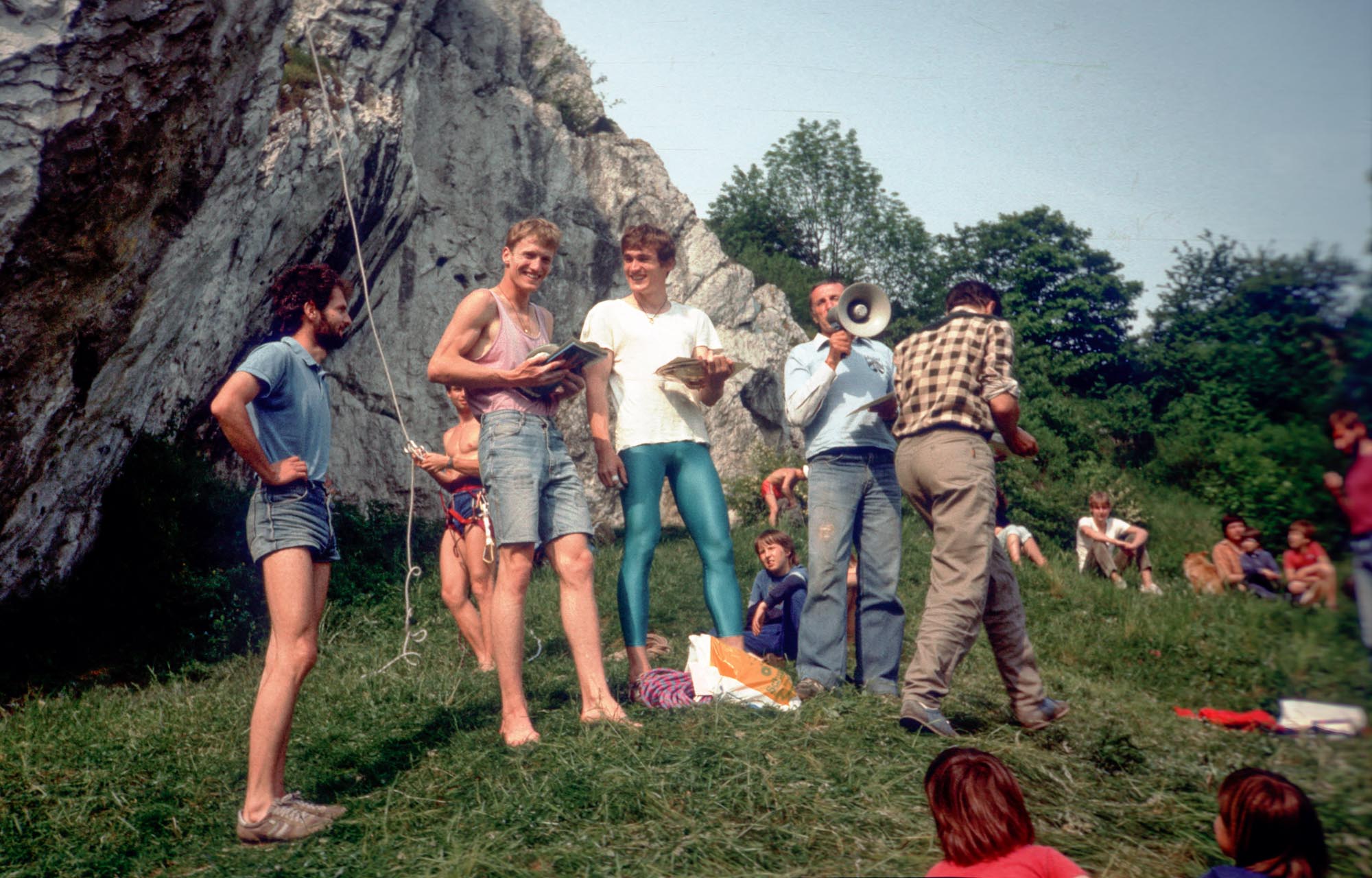
Men winners 1989. From the left: Rudo Mihál, Ruda Tefelner, Tomáš Čada (photo: Pavel Weisser)
FIGHT FOR THE PILLAR
The last year of the big outdoor sport climbing competitions which is written about here took place in Bystrc at the “old fascist pillar” in 1990. After the revolution, the overall atmosphere was more liberal, and finally, the inspiration from the West could get past the iron curtain.
- We held an organization week during which Ivoš Doušek, who knew how to attract sponsors, got involved.
All of these pioneering competitions took place on rock. The hardest lines were usually chosen, some of which were never tried or at least freeclimbed before. Freeclimbing became one of the guiding principles of these competitions. And the year that took the place on the ‘Pillar’ was the greatest. It was already done professionally, with artificial holds. It was an international event of Czech and Slovak climbers. People from all over the republic gathered. There were stalls selling climbing equipment all around the pillar. The pillar was colored, and covered with banners, which we hand-made for sponsors so they could advertise. I was in charge of looking for sponsors at the time. I went to the West for exhibitions that were in Munich, and I contacted various companies there. They gave us some products to use as prizes. For example, we managed to get hanwag climbing shoes and some ropes. Nobody had much money back then and every single manufactured rope was considered to be valuable. This event took place at least twice and then the races began to move to indoor climbing gyms.
Climbers such as Marek Havlík and Tomáš Čada appeared at the competitions. These guys competed in the superfinals on the 25-meter pillar. The event was even broadcast on TV. The spectators lay down all around the pillar so they wouldn’t have to bend their necks. On the top, the pillar was connected by a large concrete beam which the climbers had to traverse. Even the good climbers fell right at the beginning of the traverse but only Havlík and Čada got all the way to its end. It was an amazing duel – it was so tense to watch.
__________

